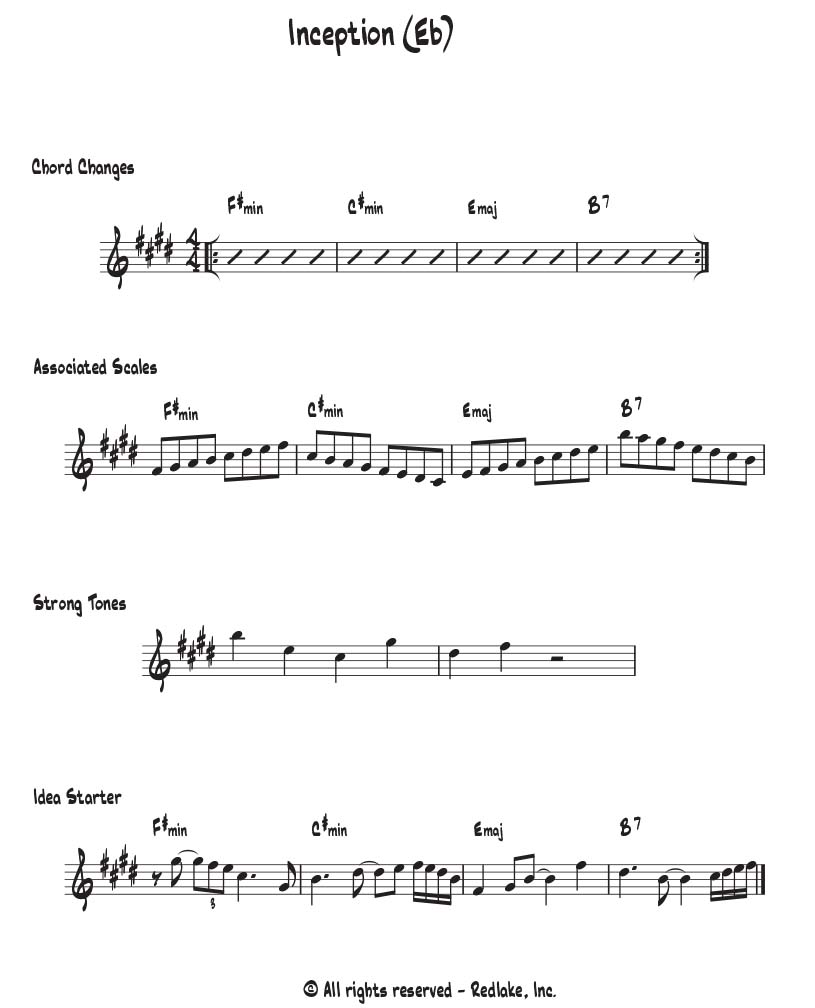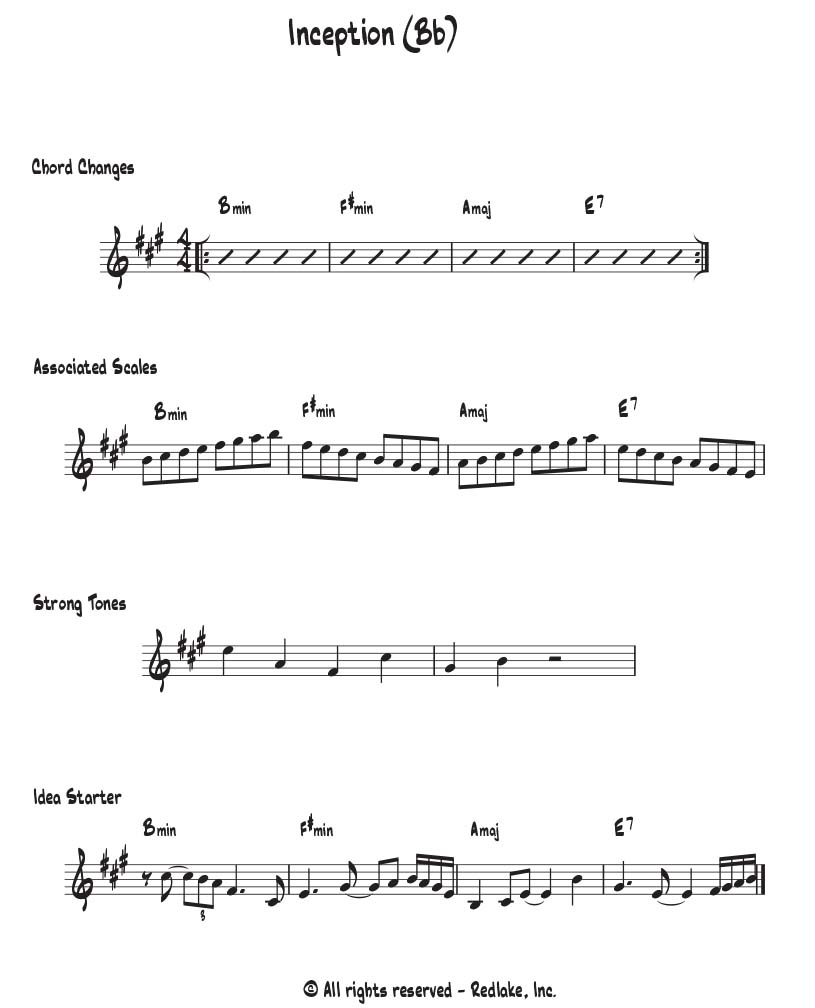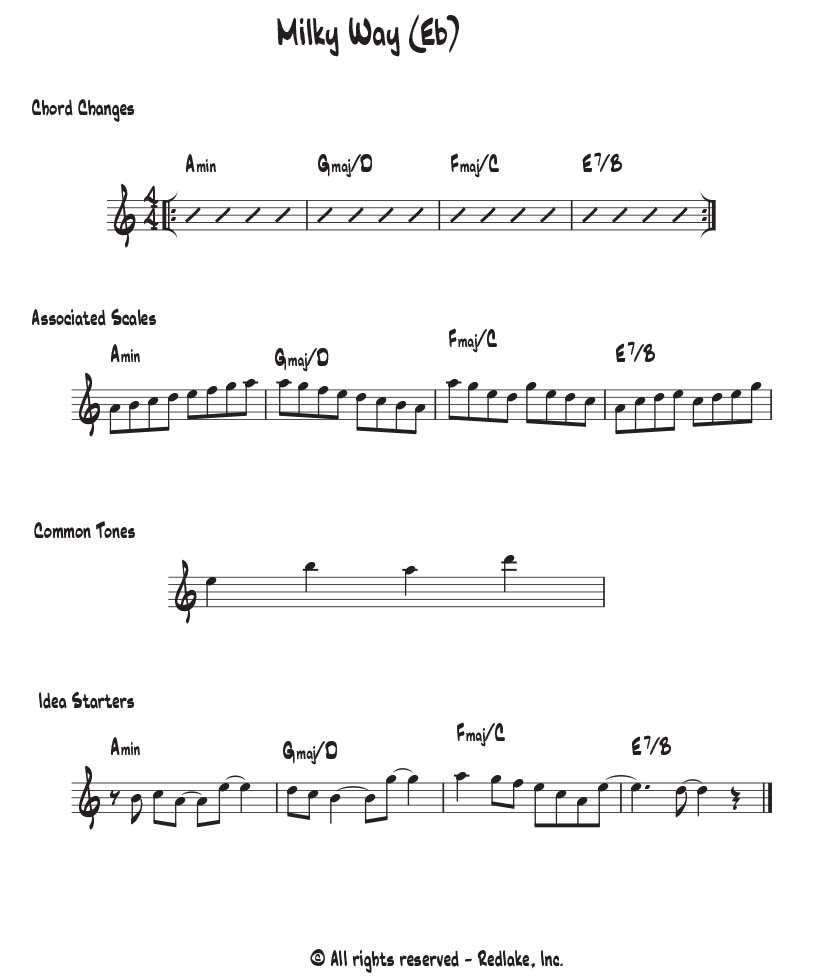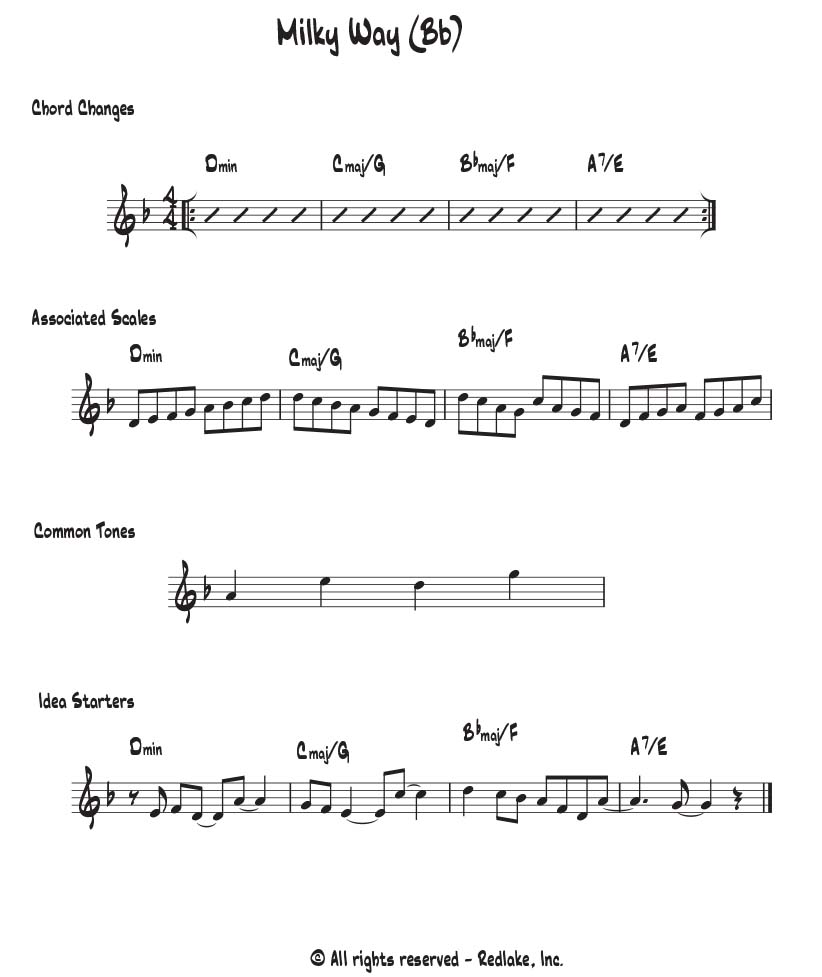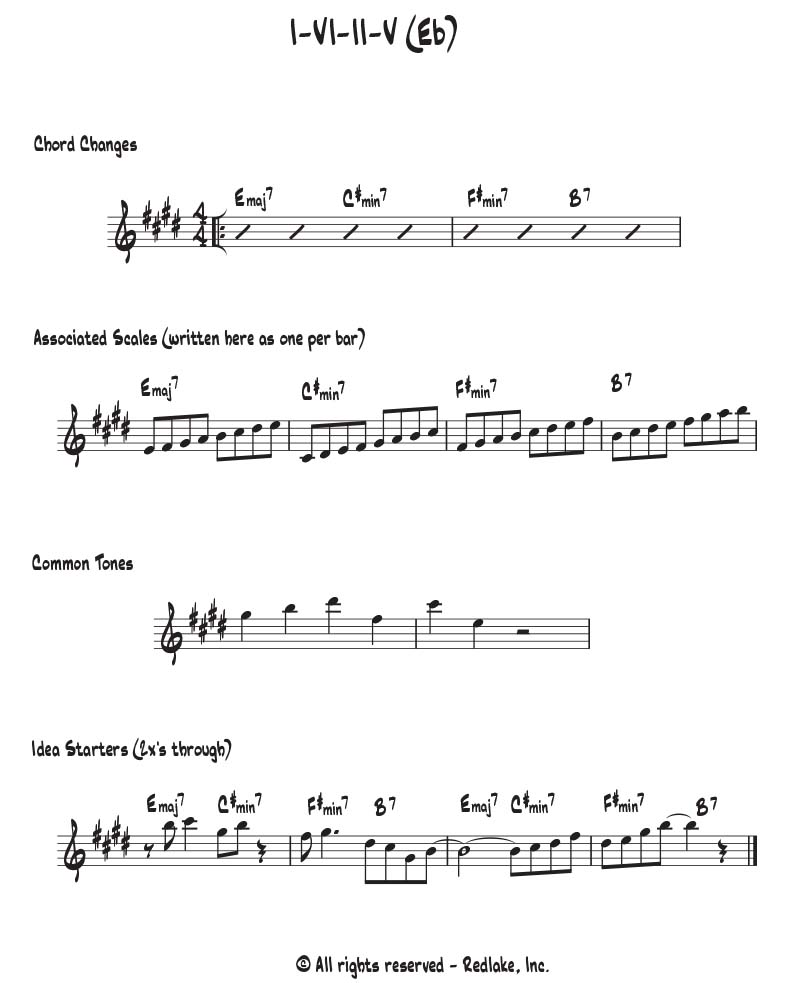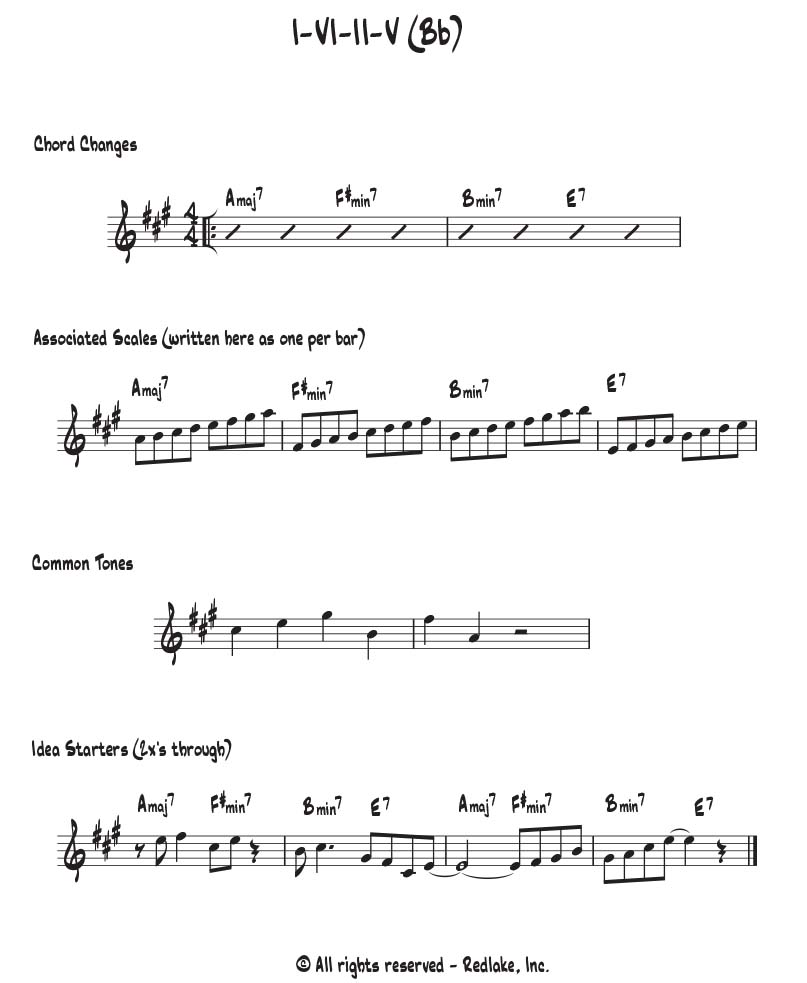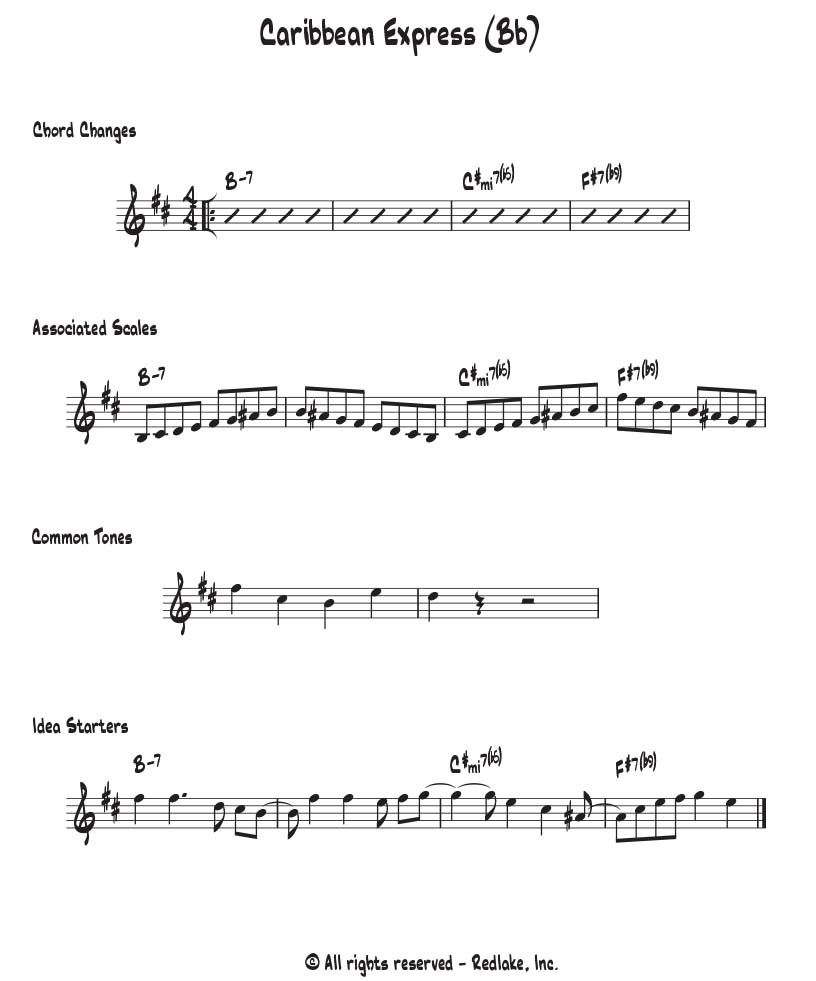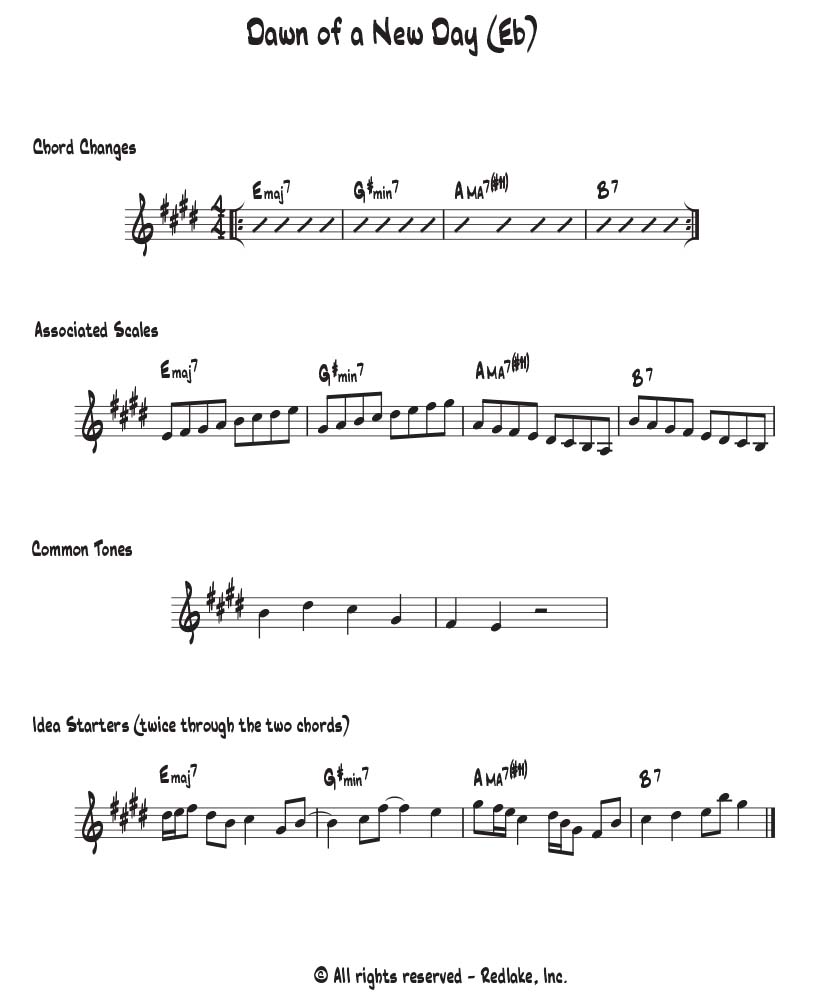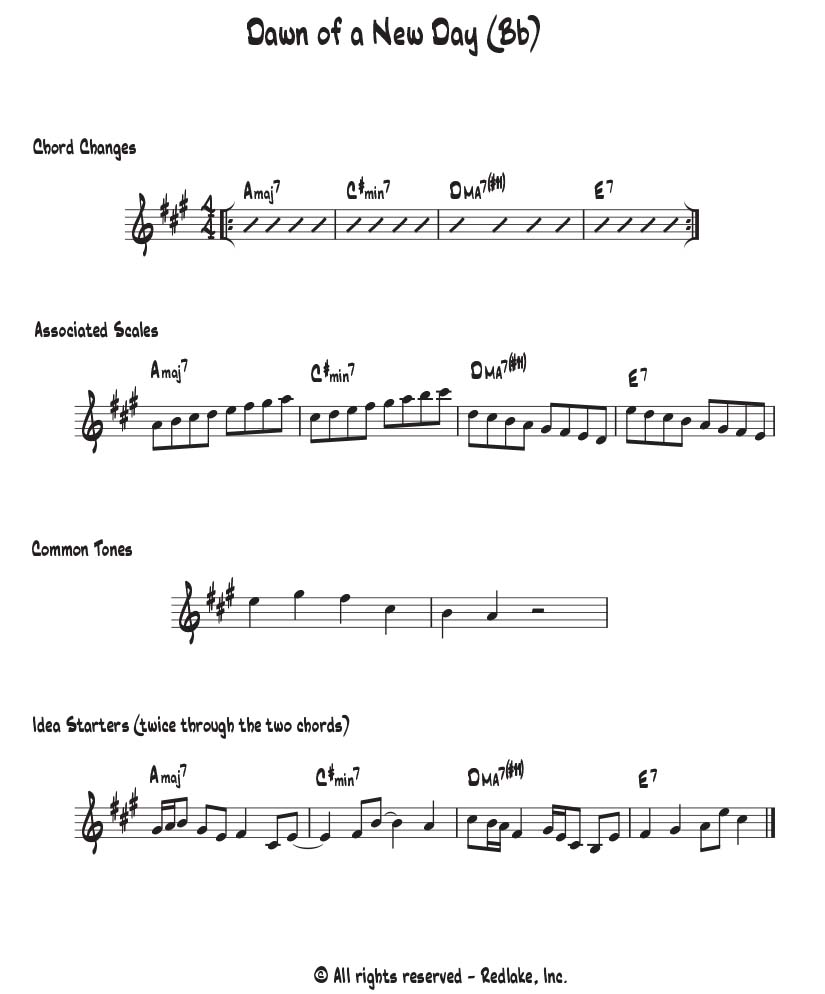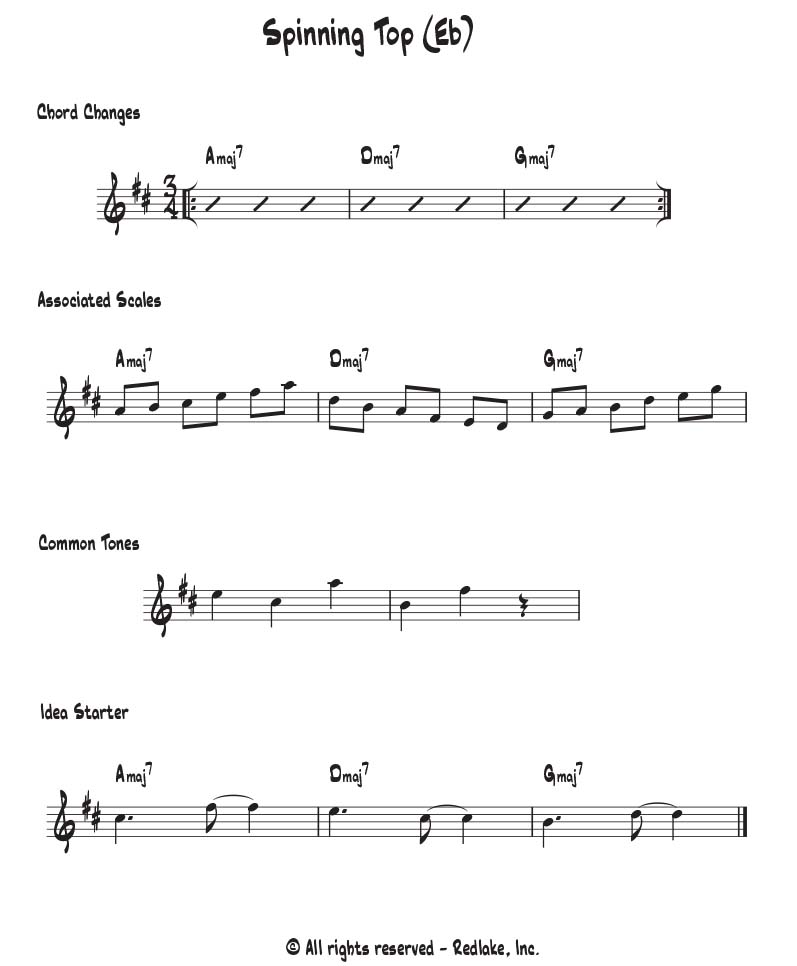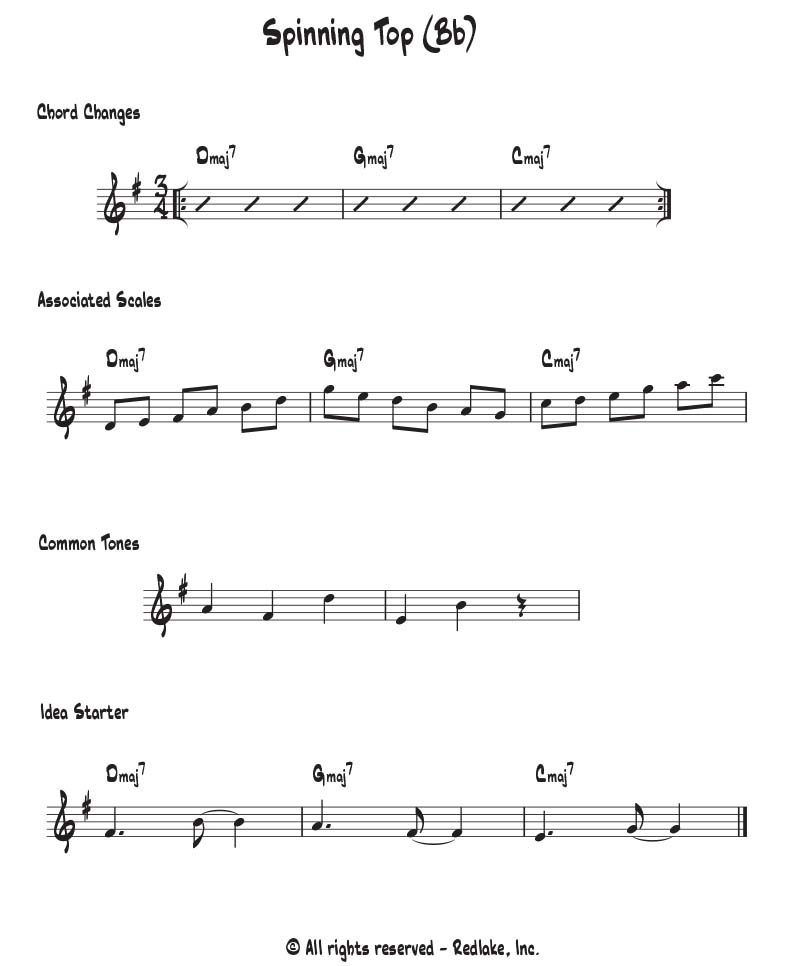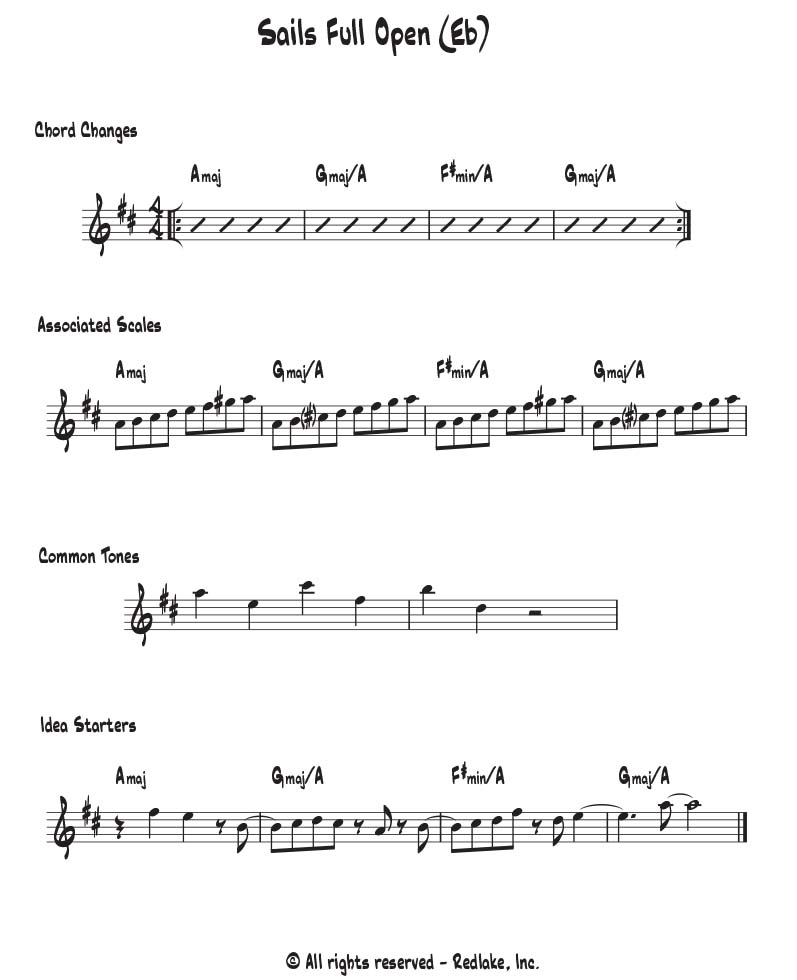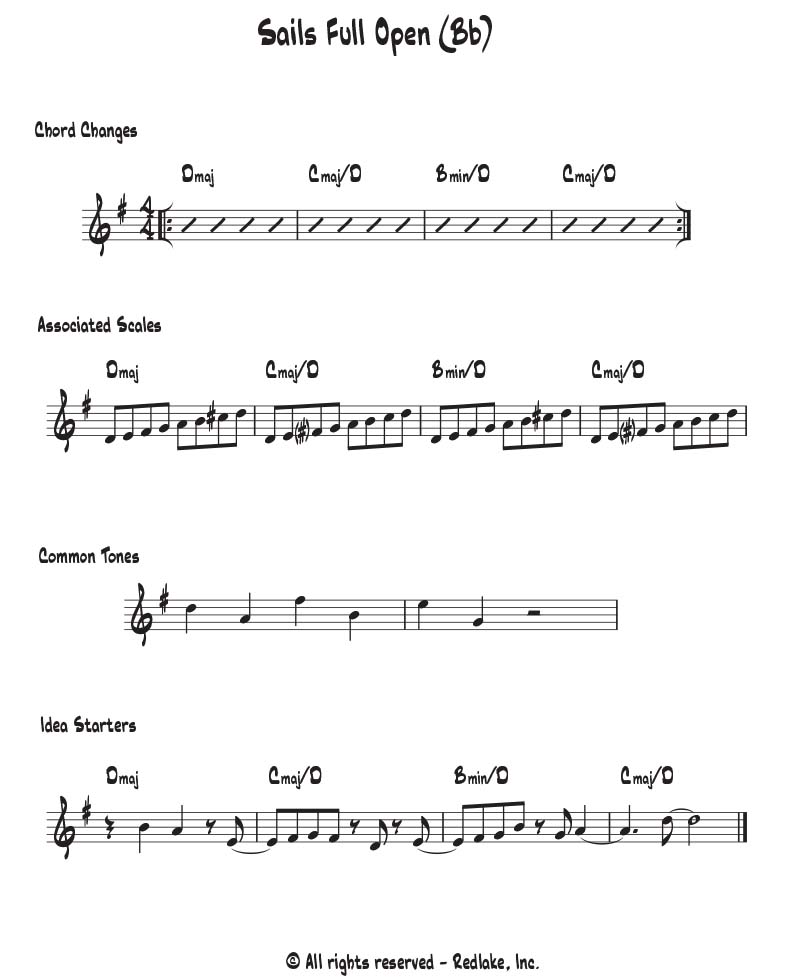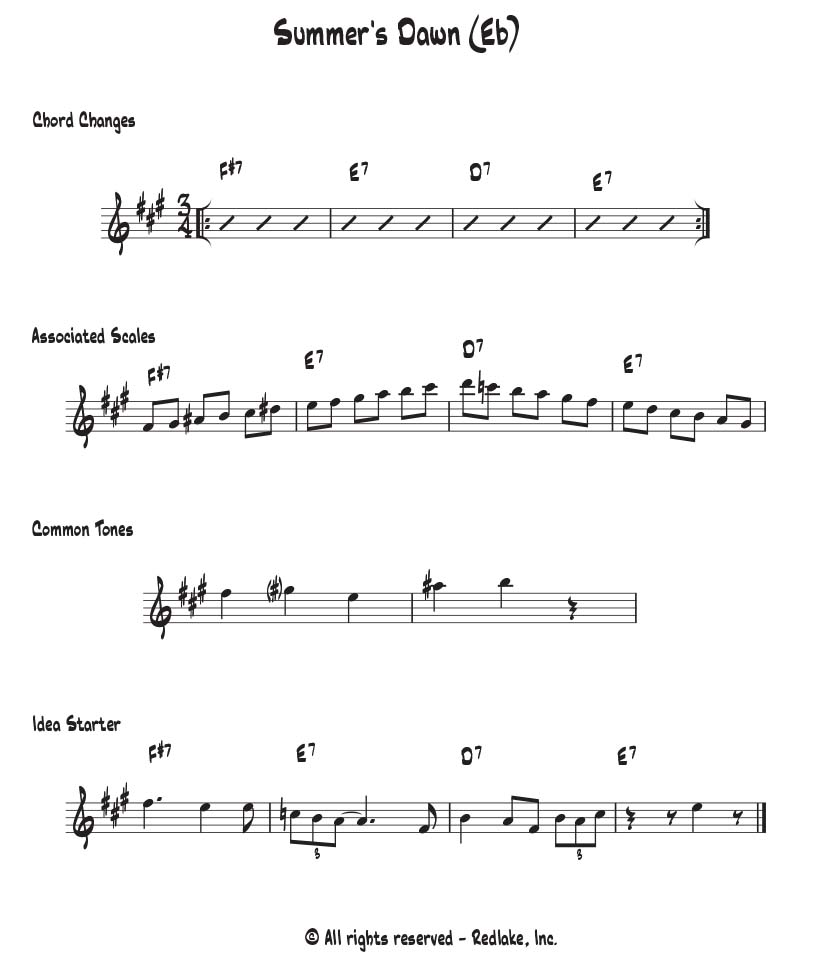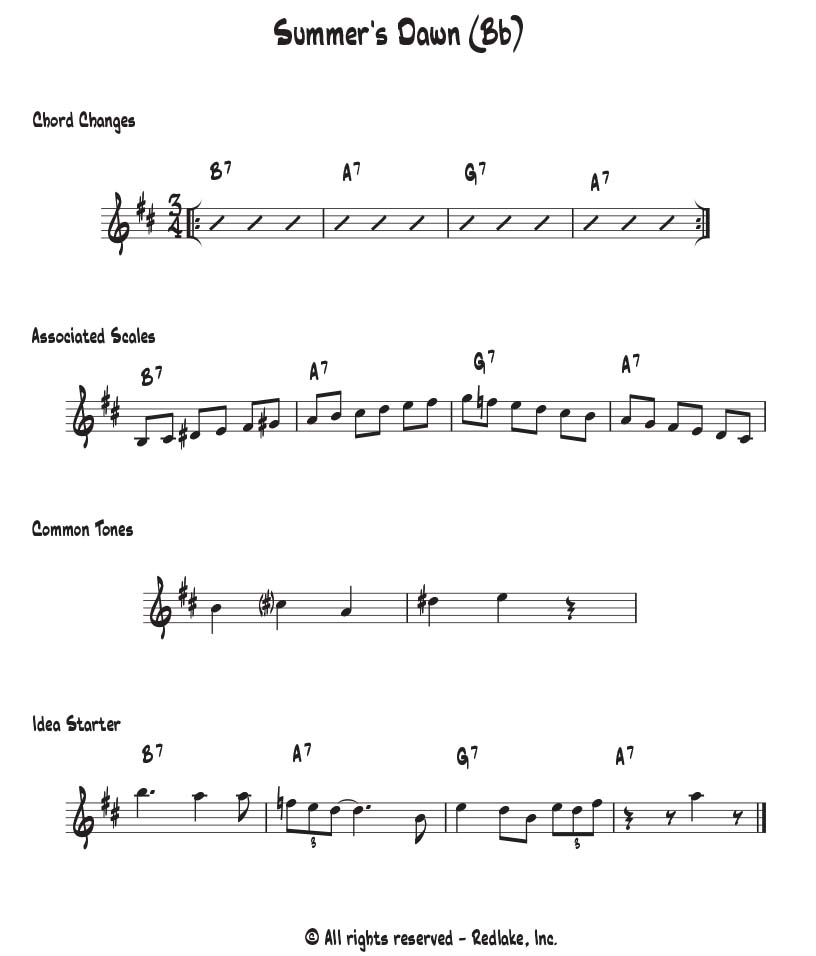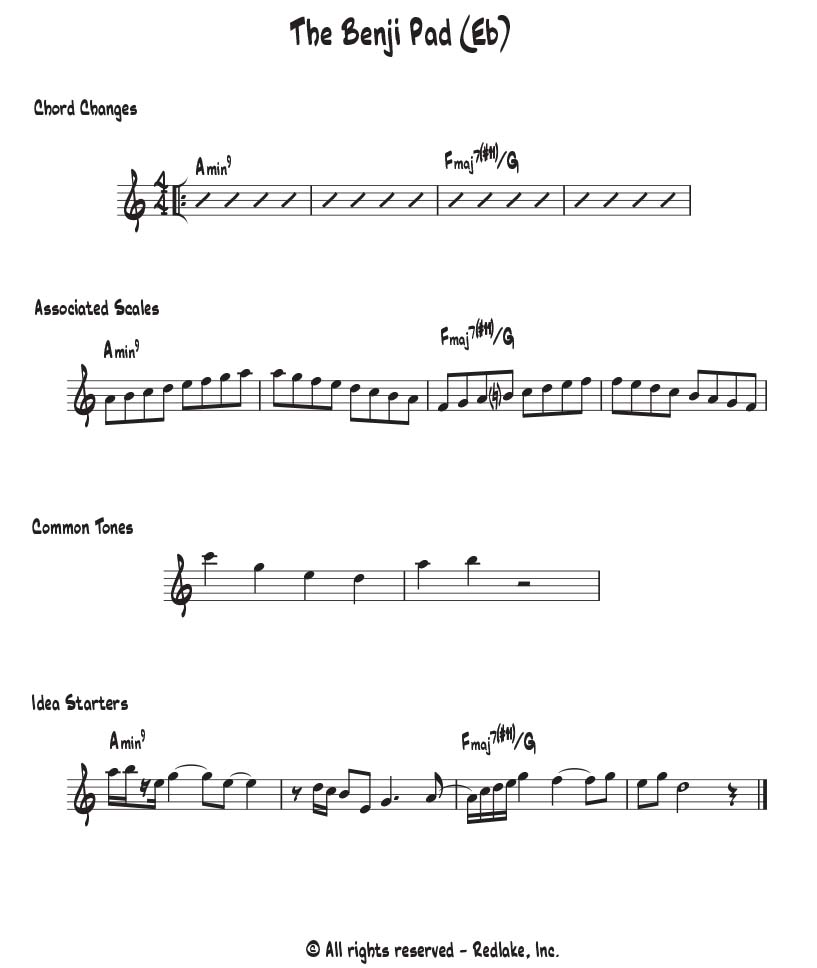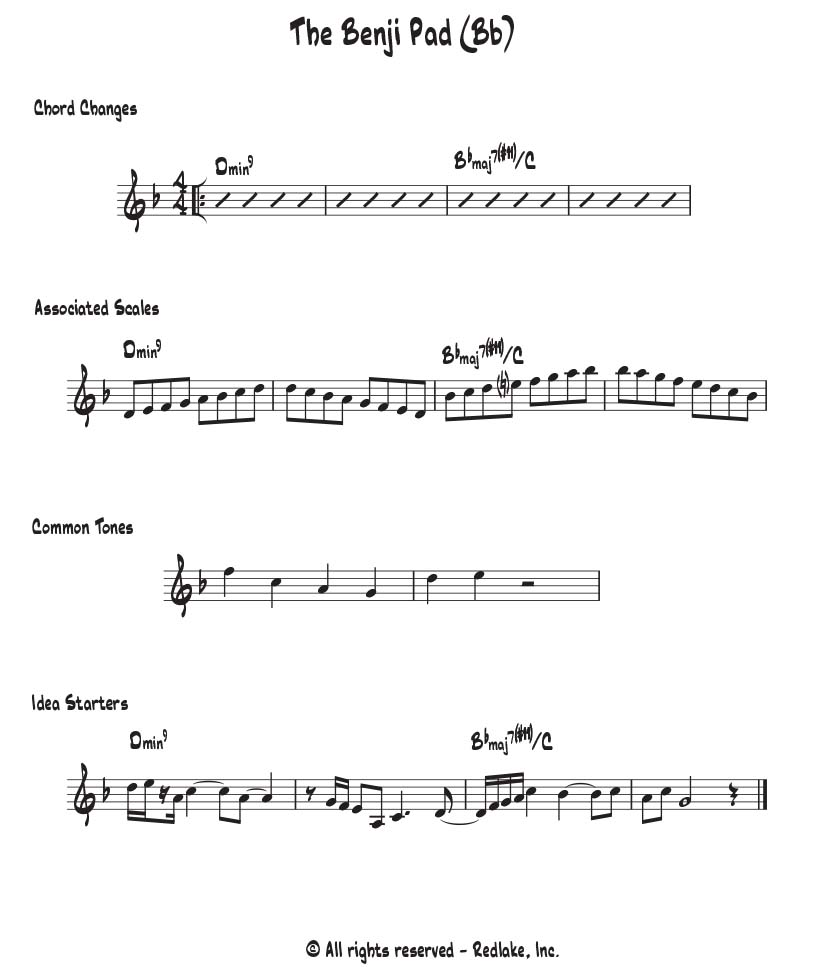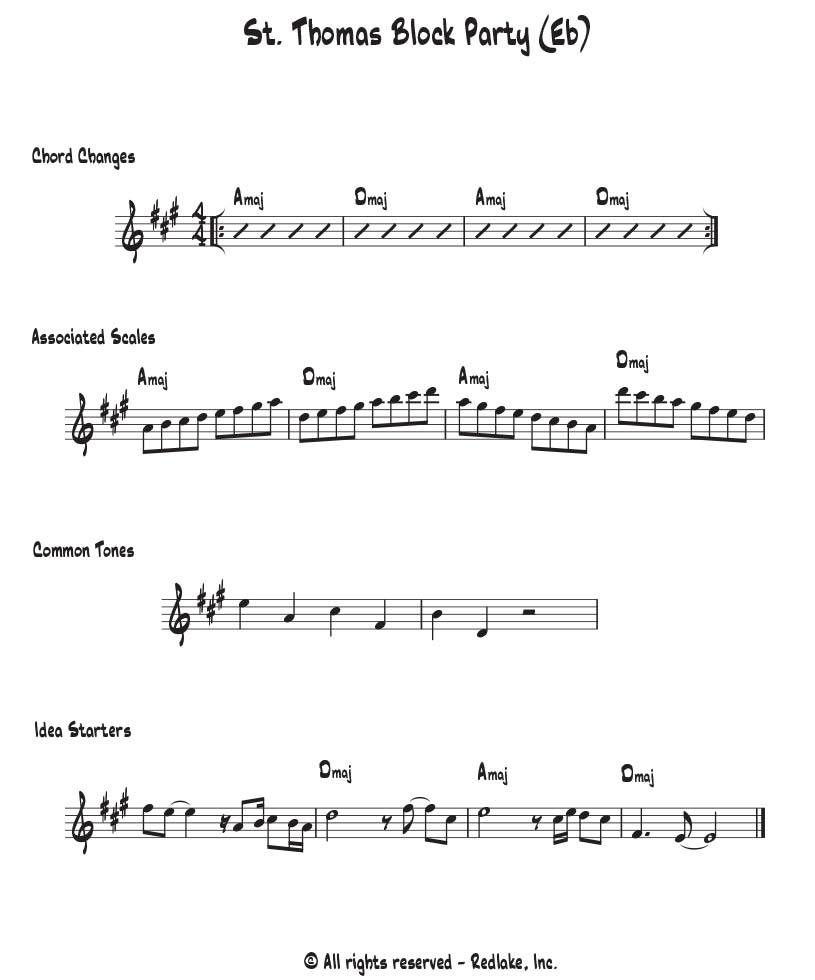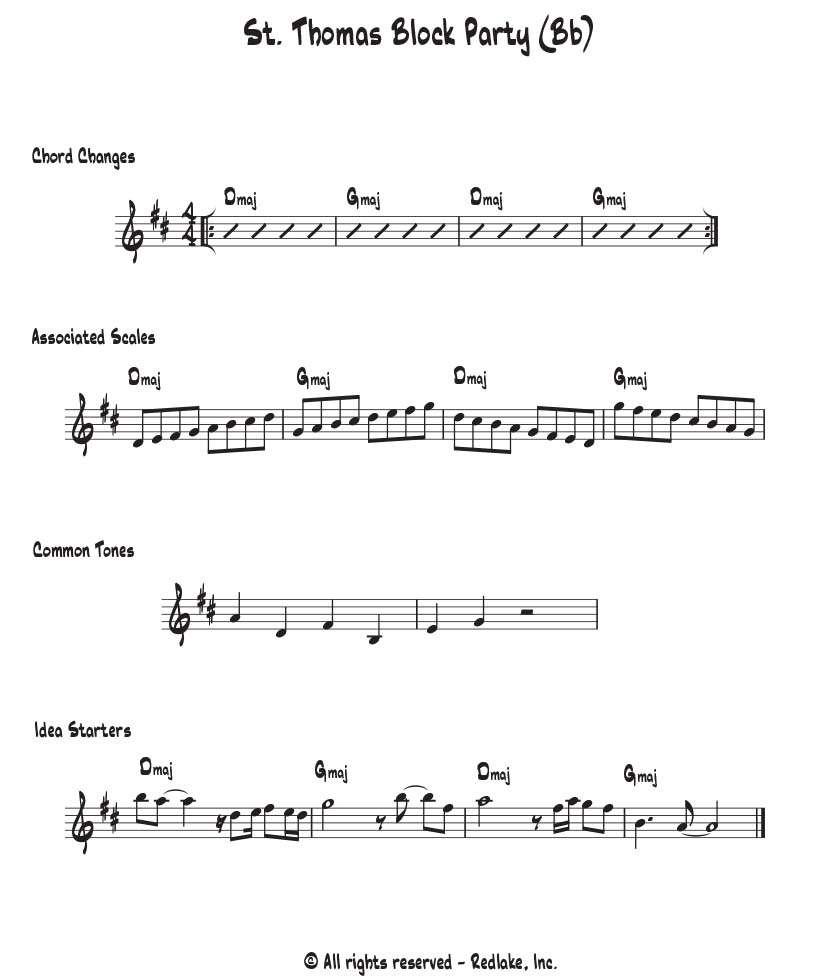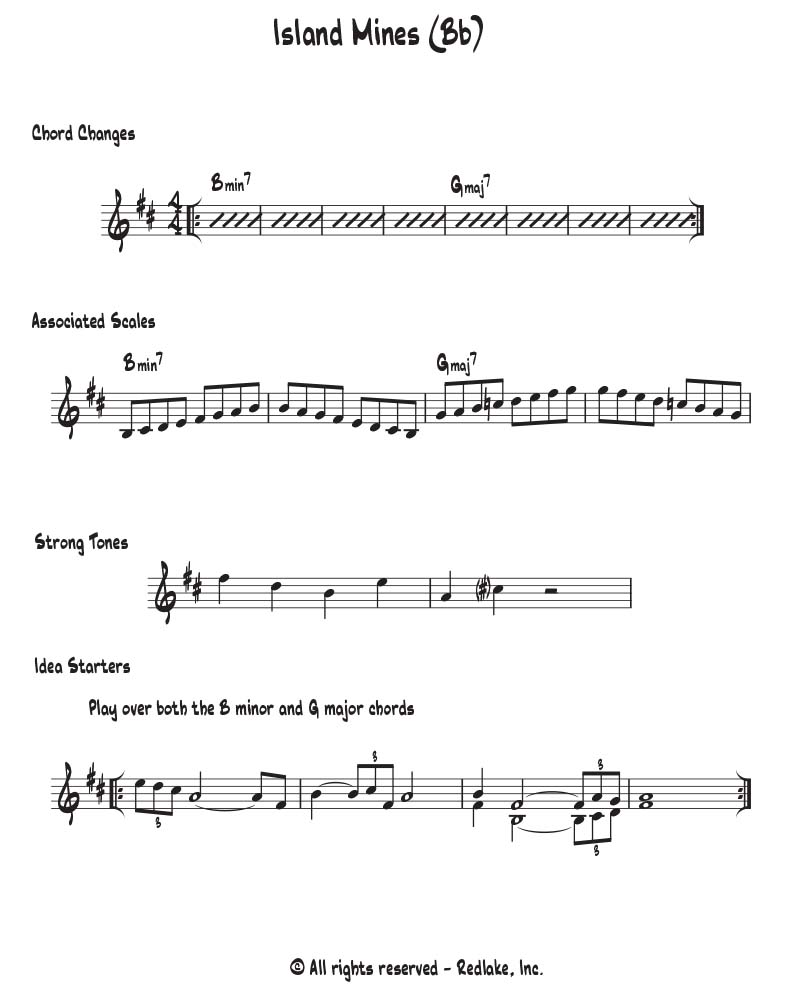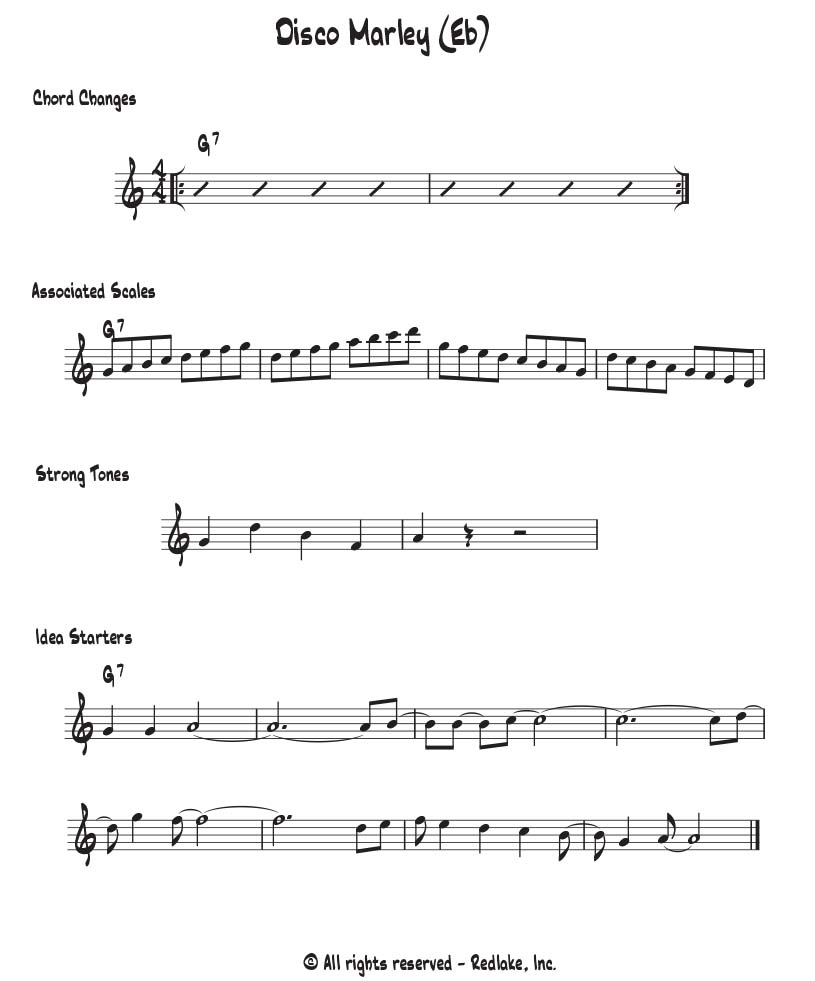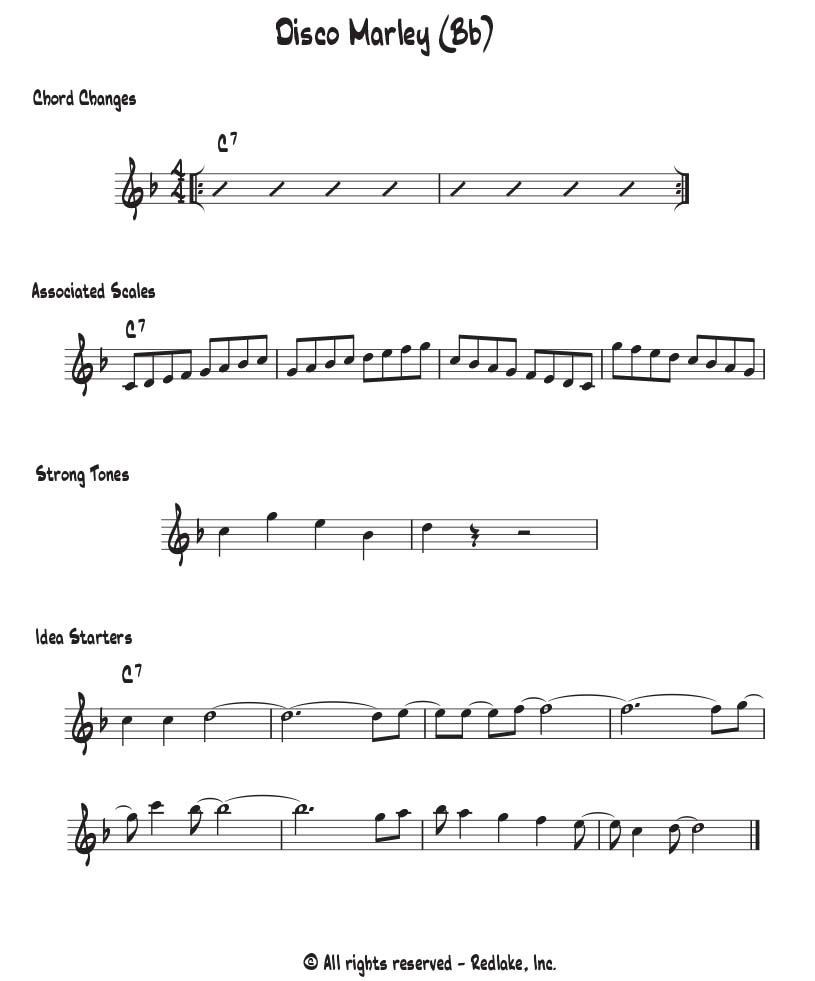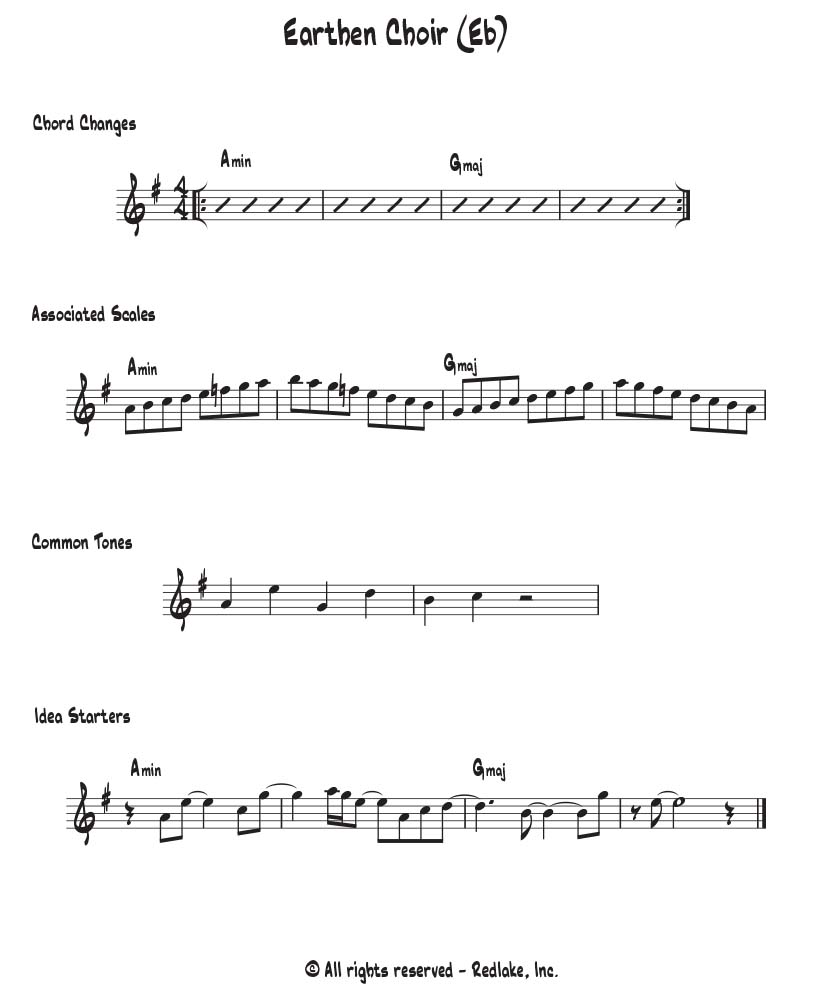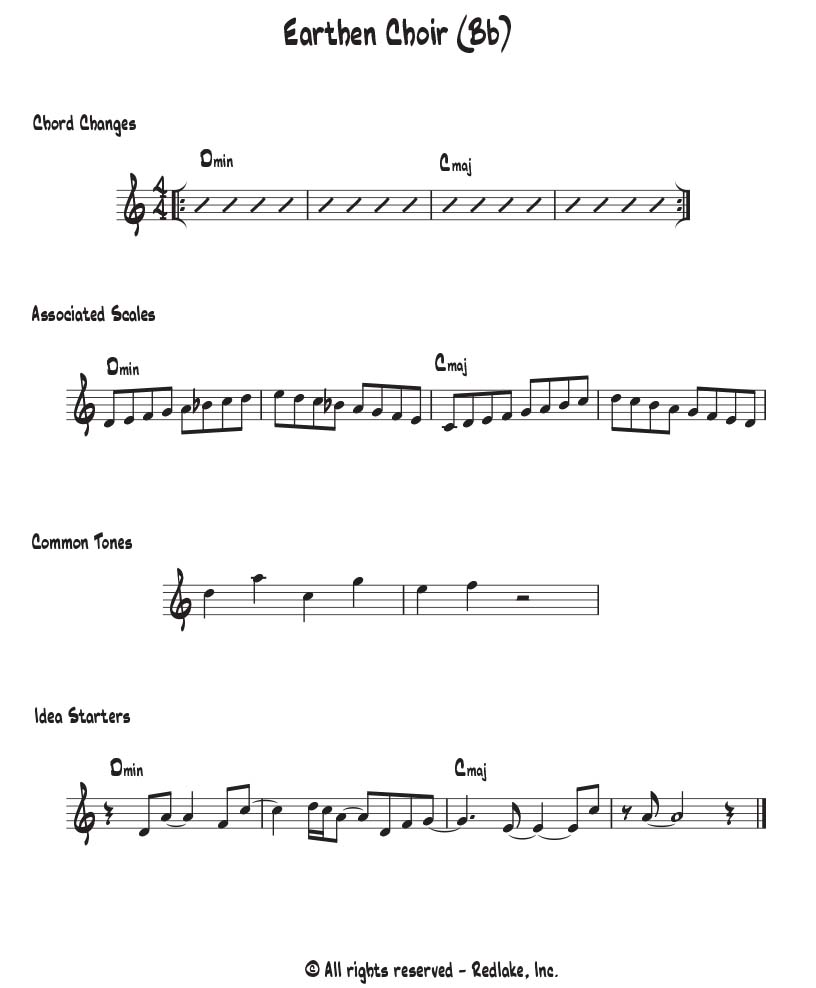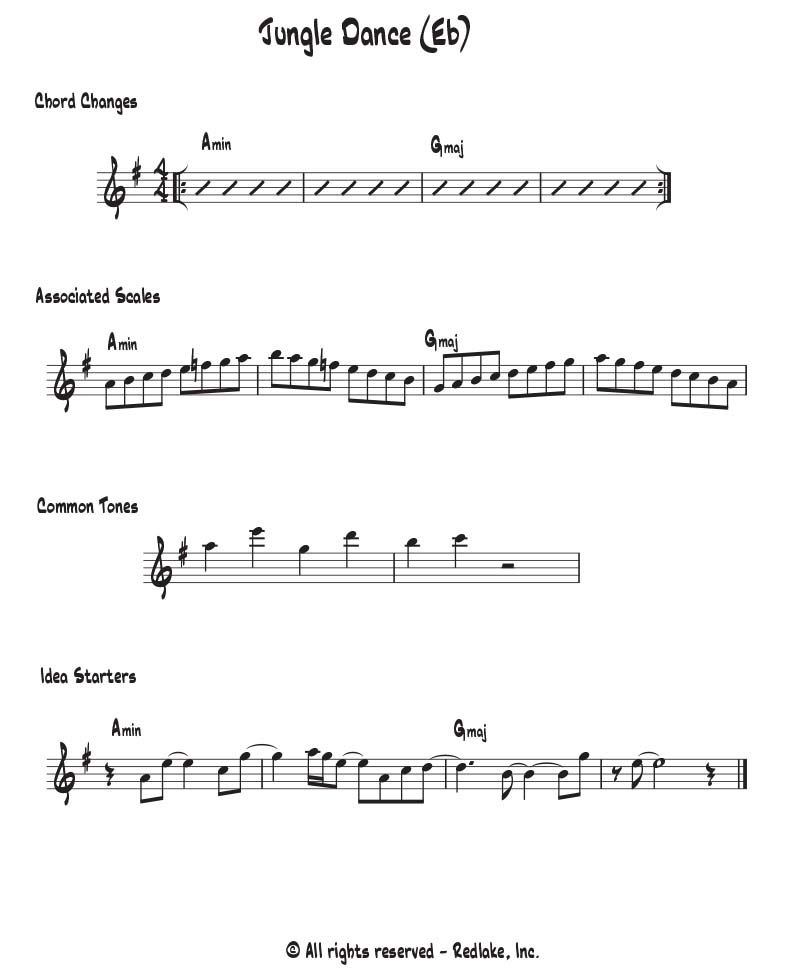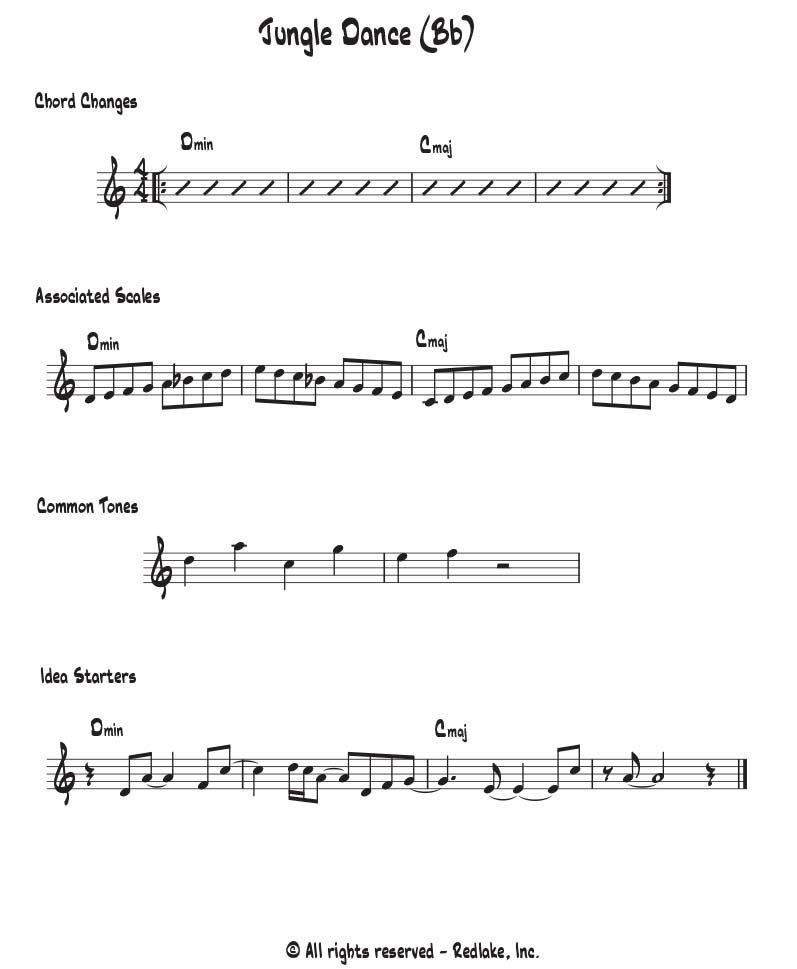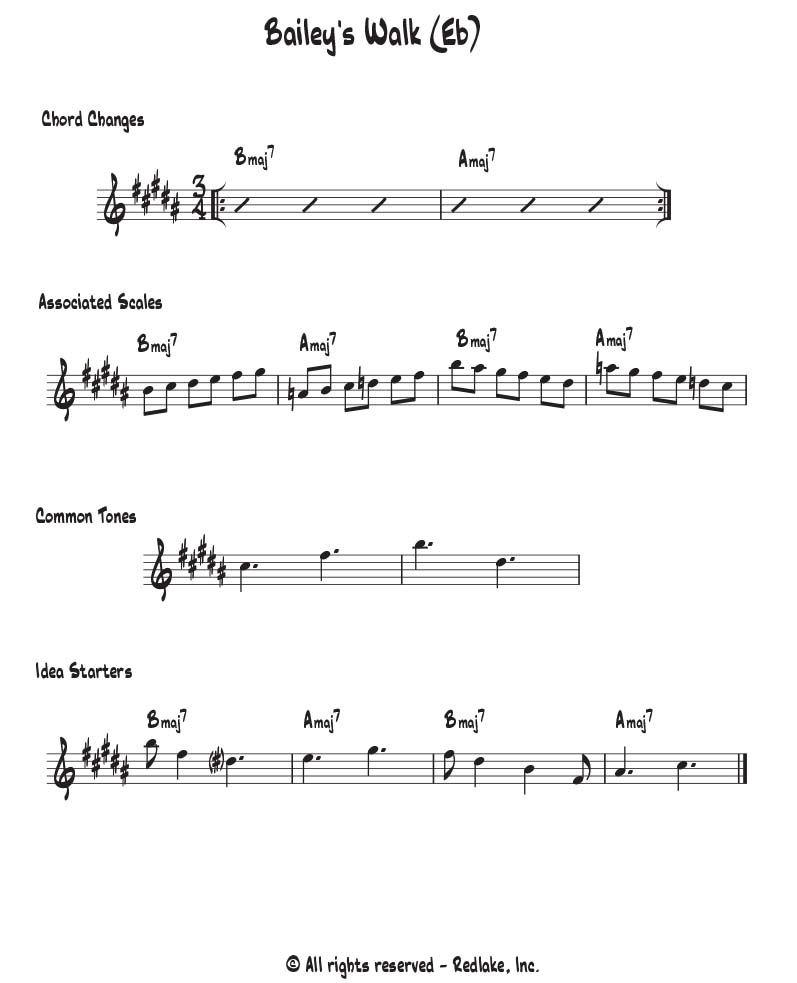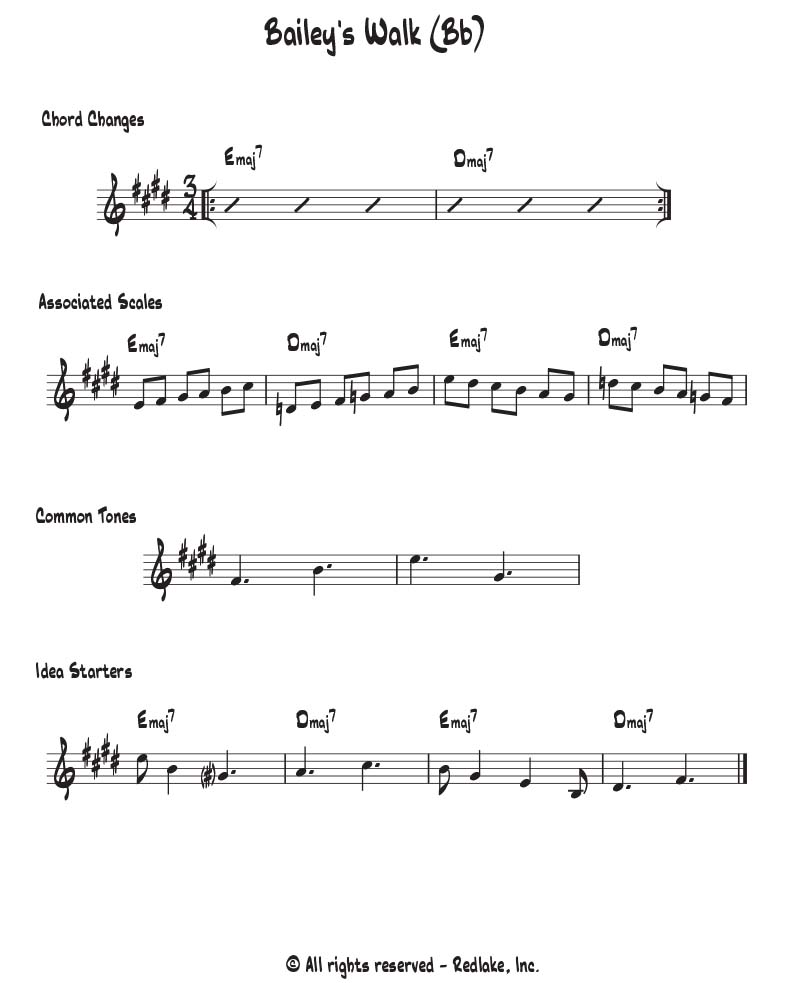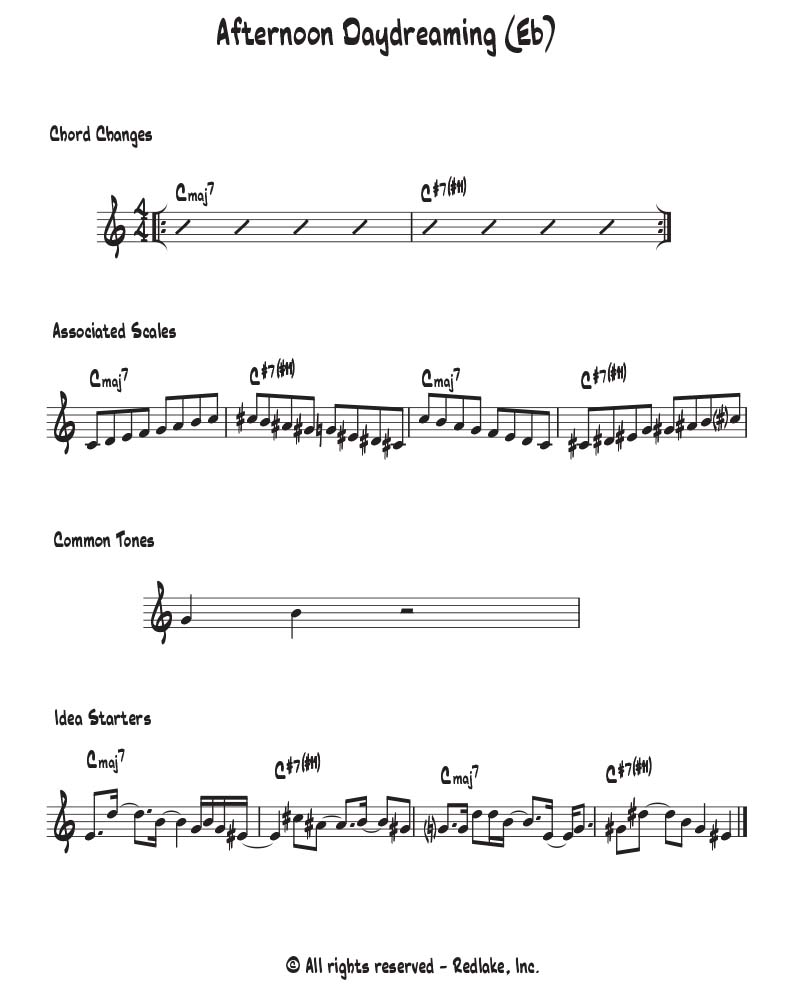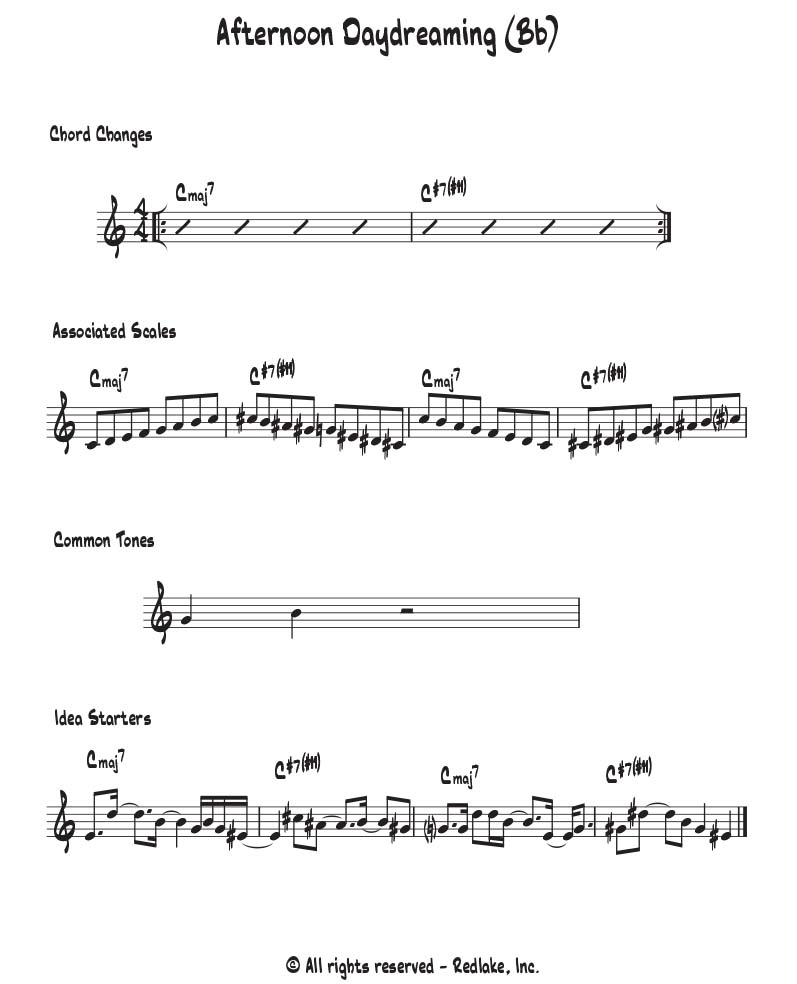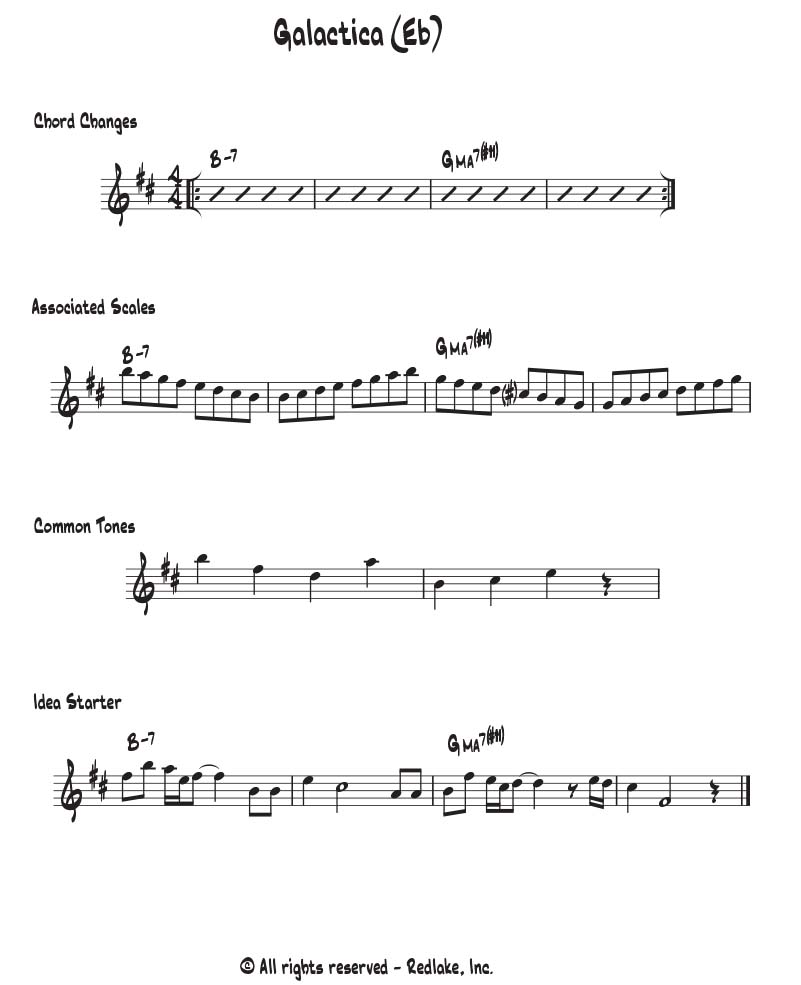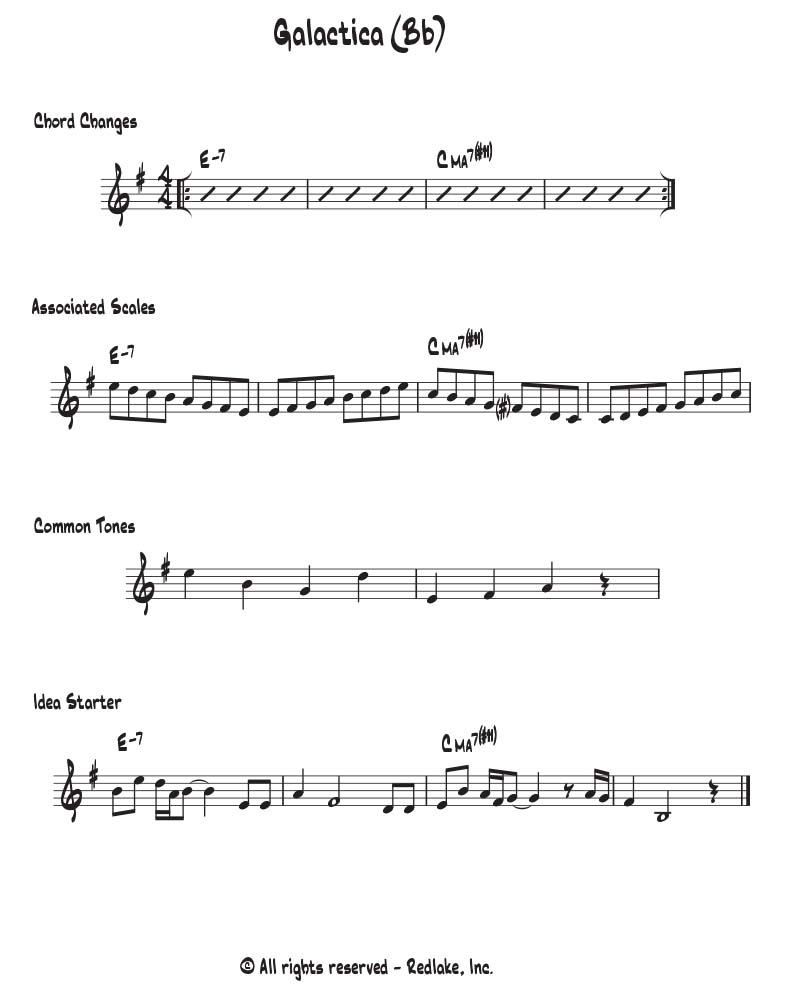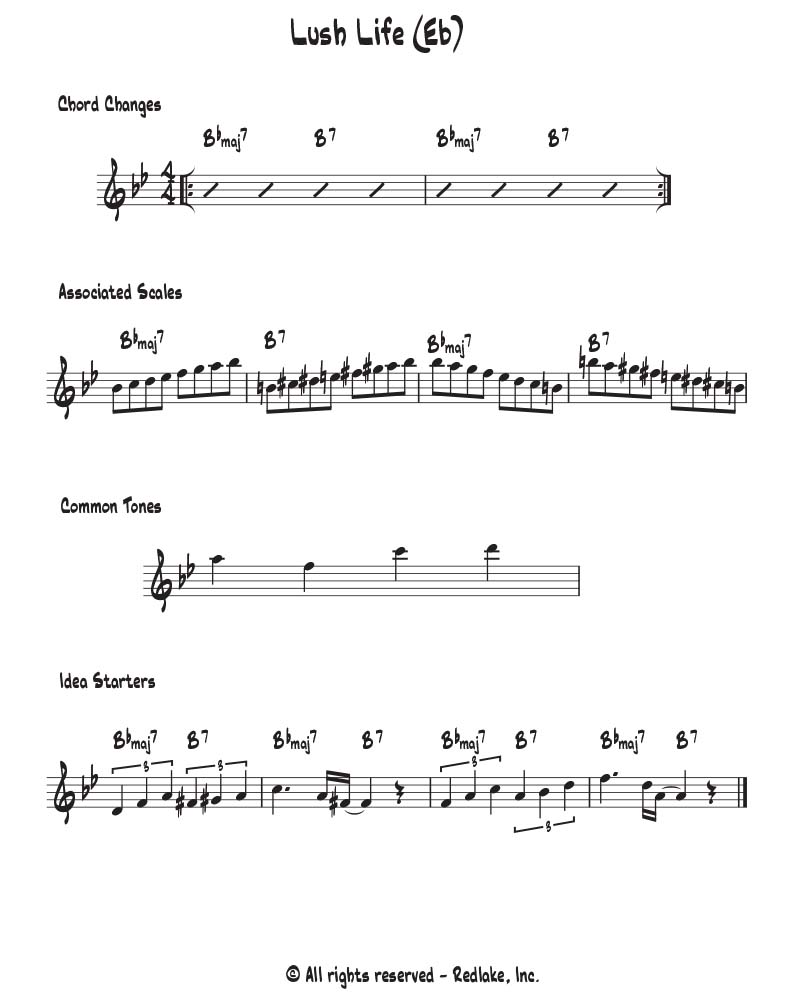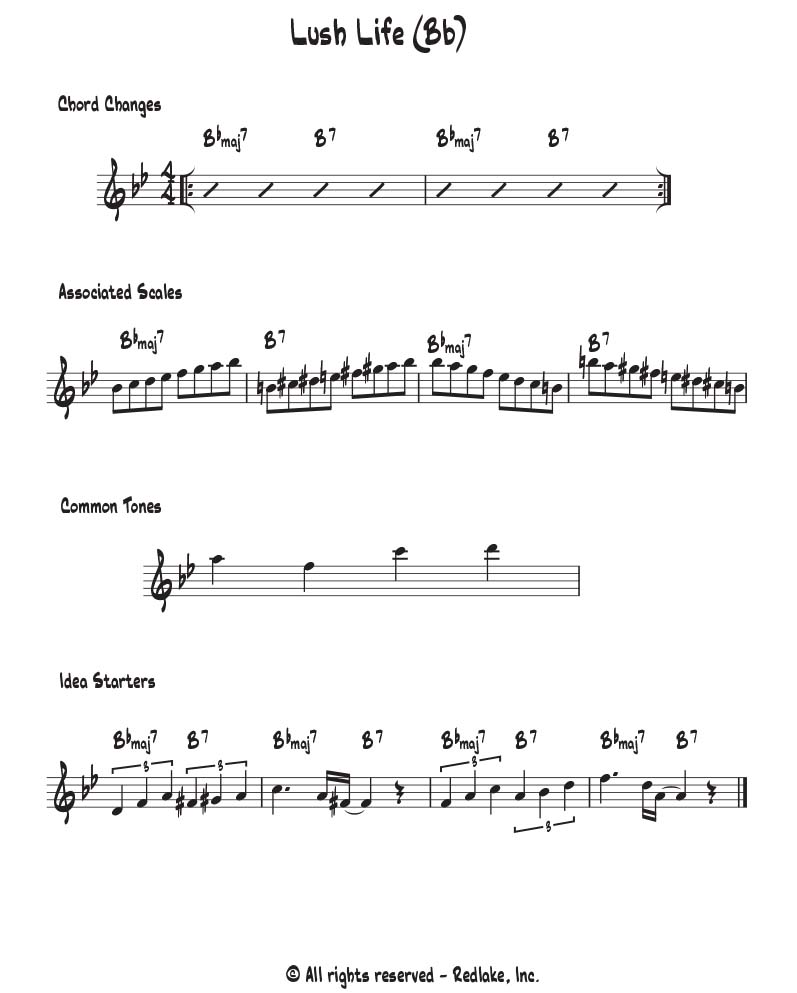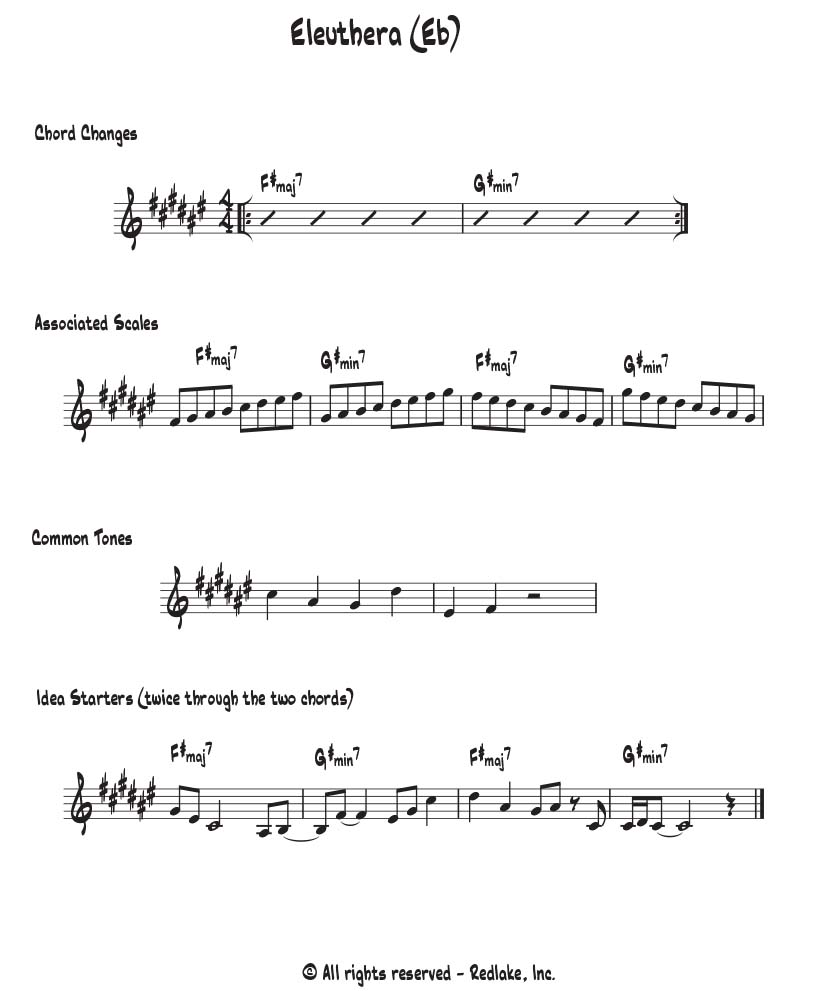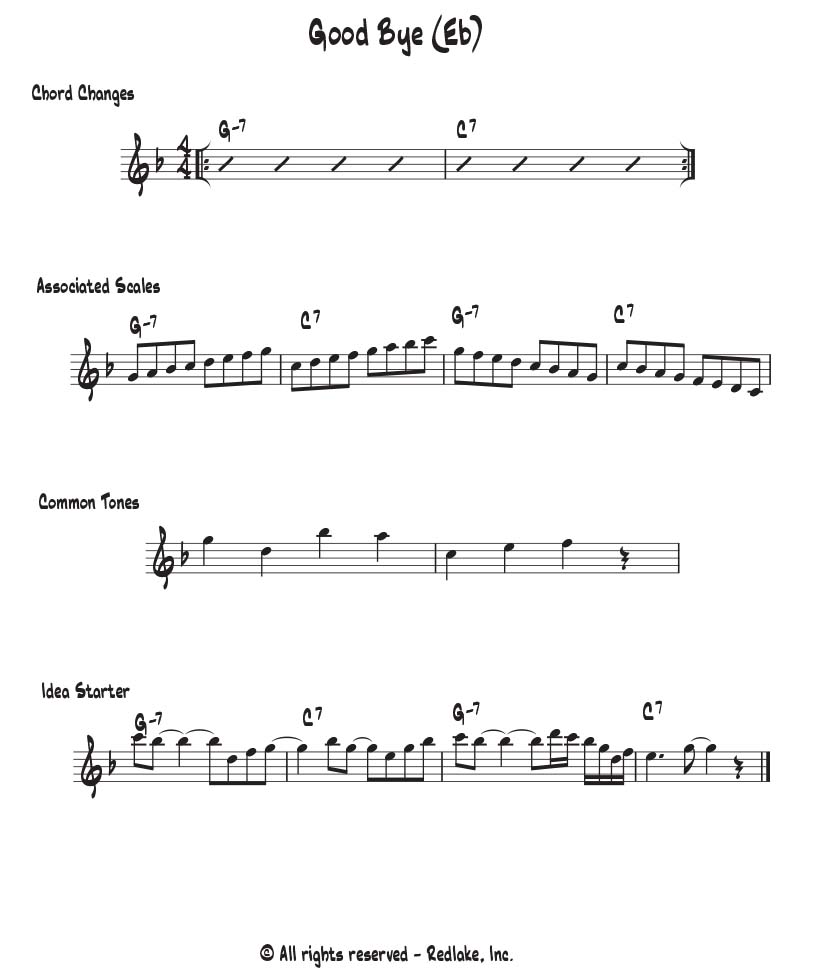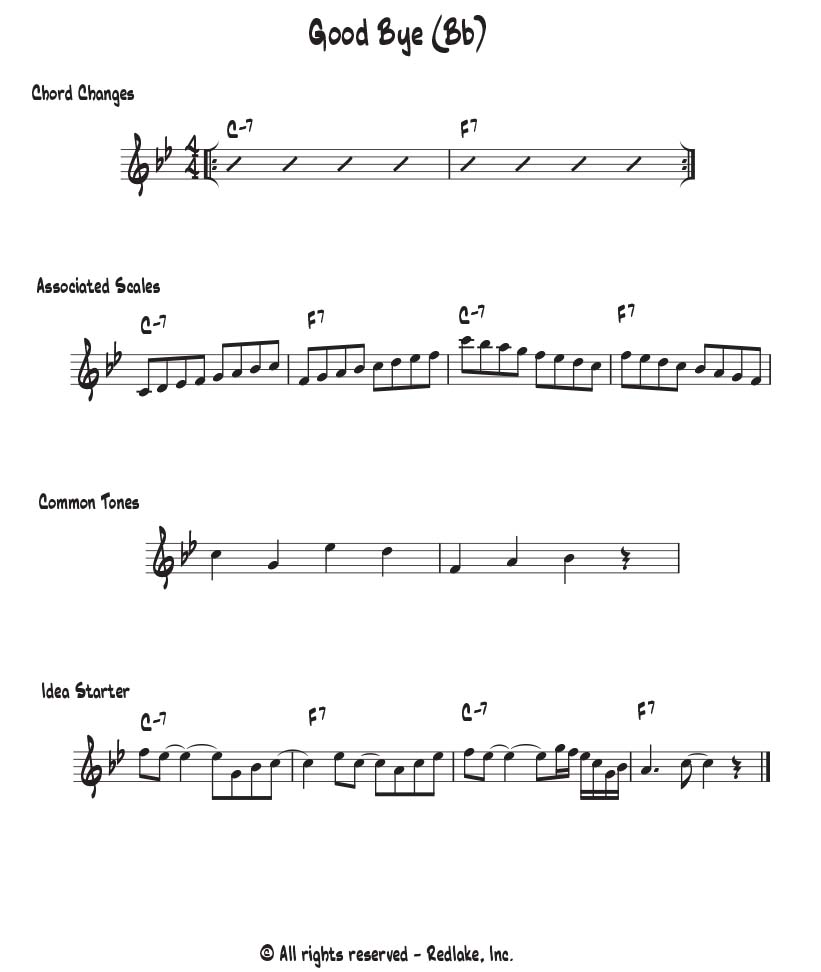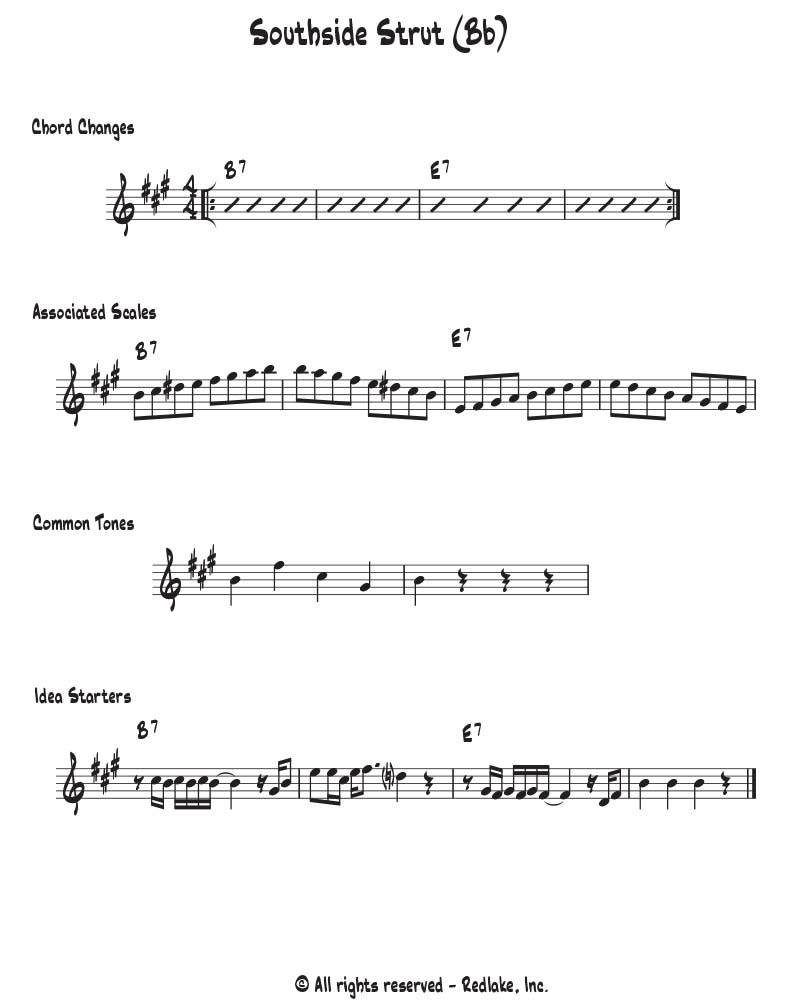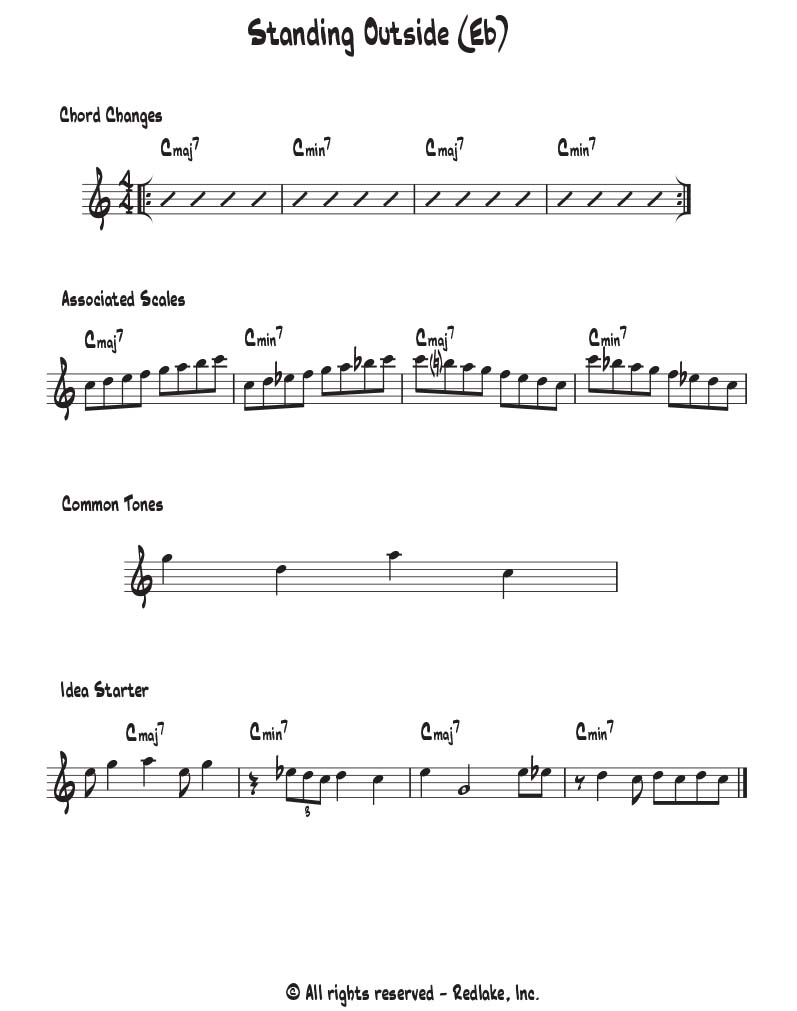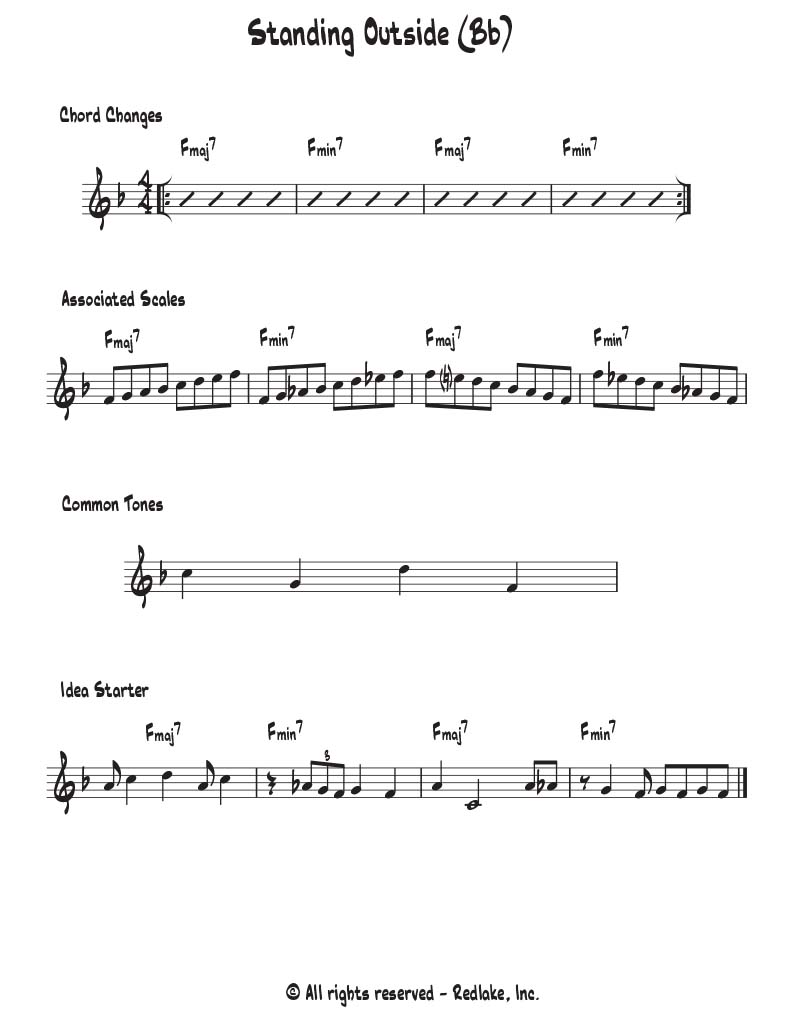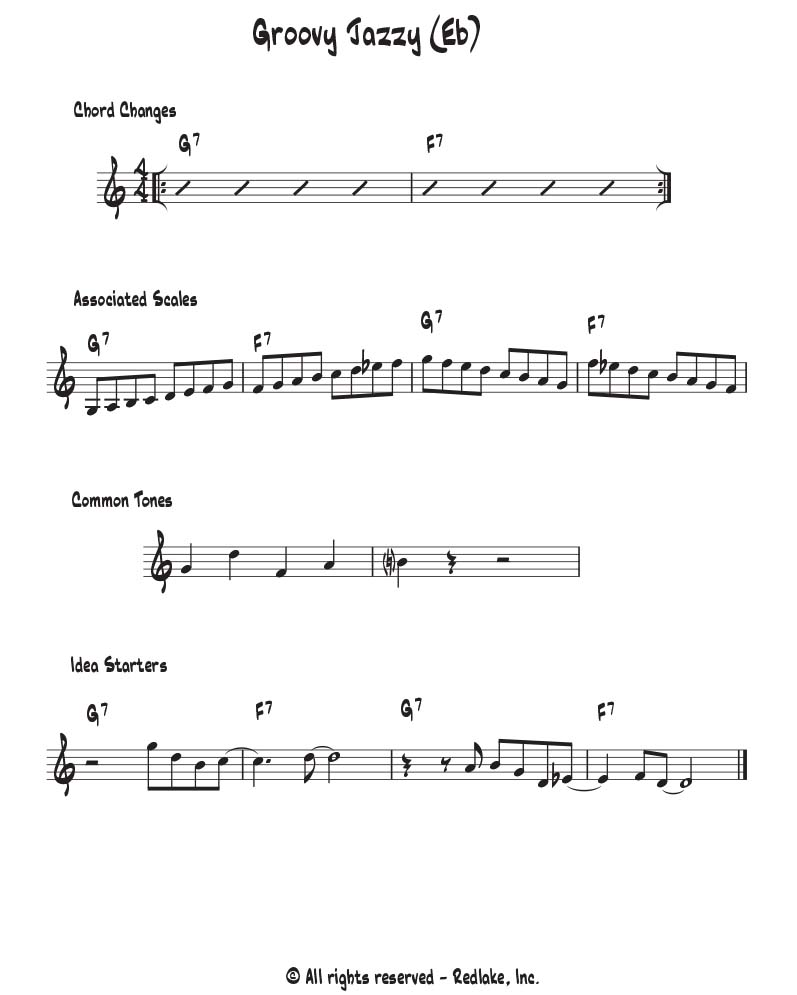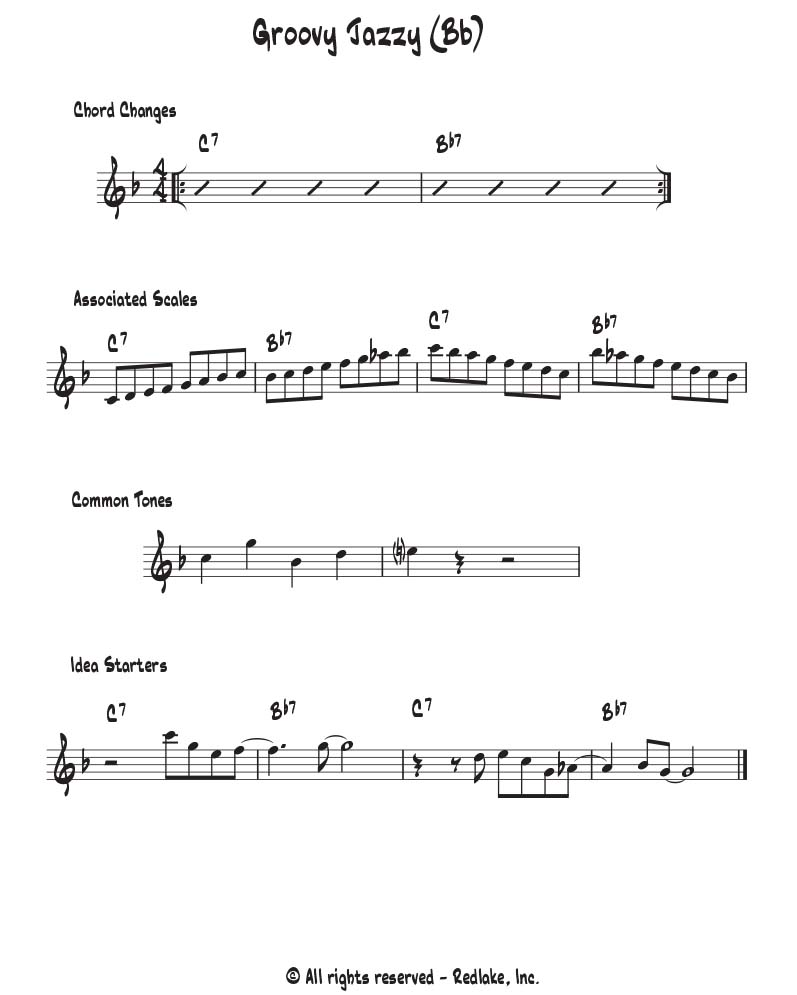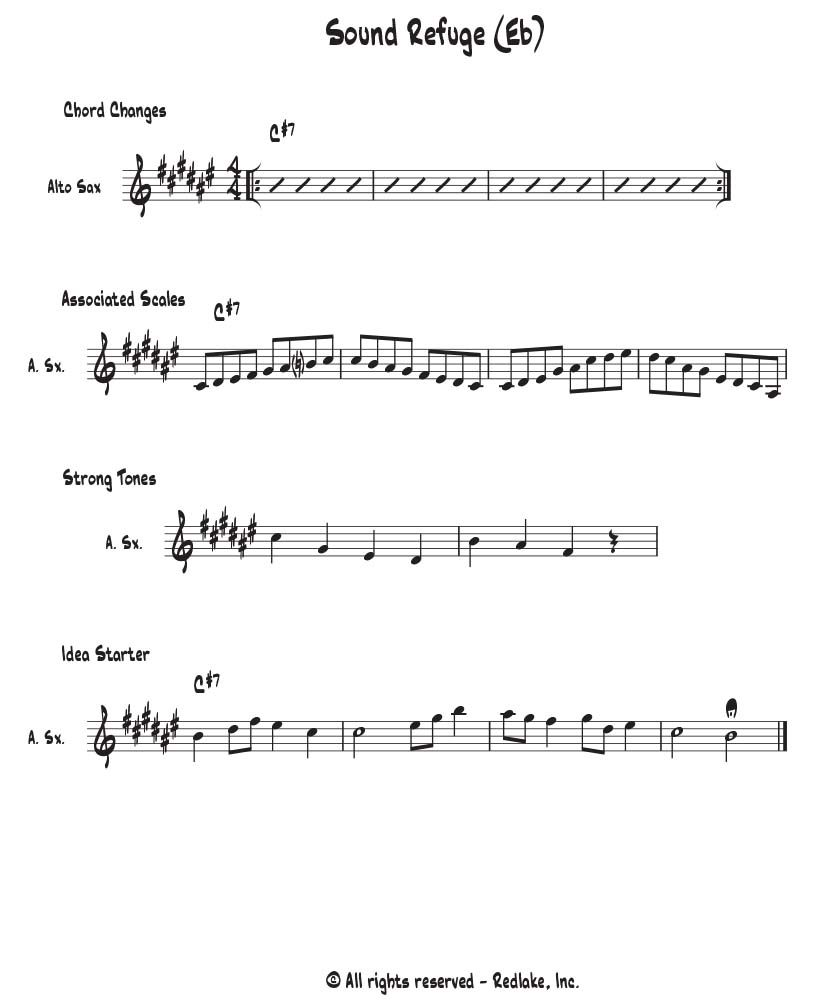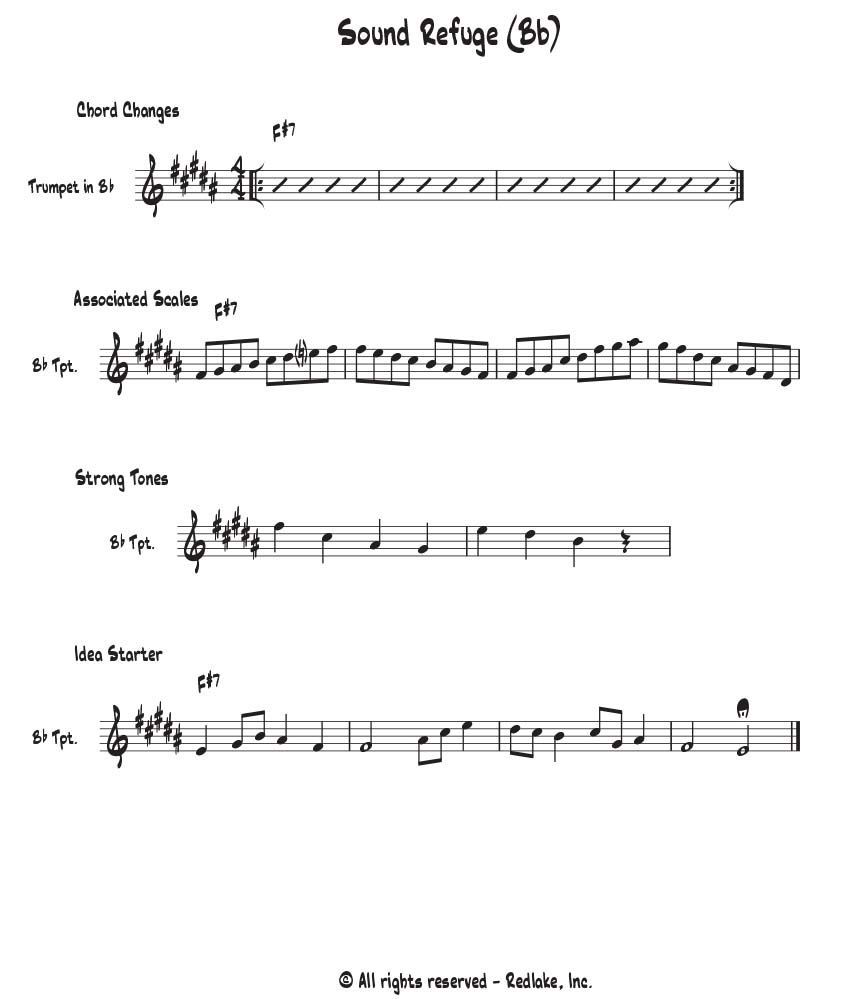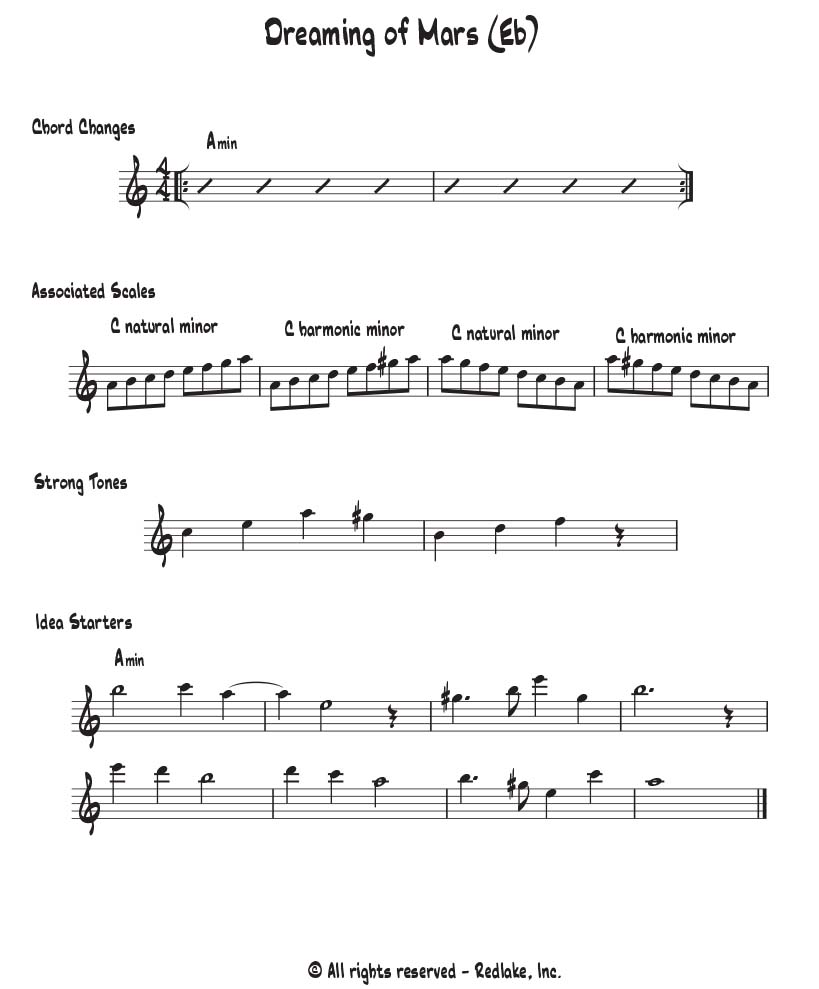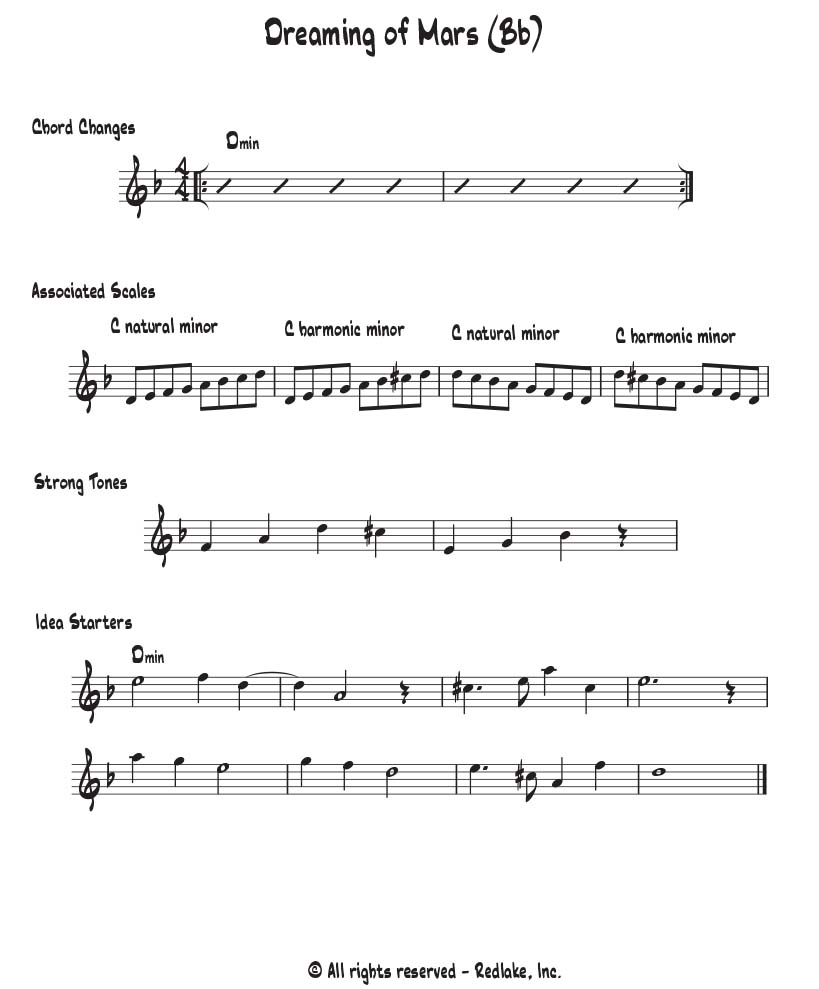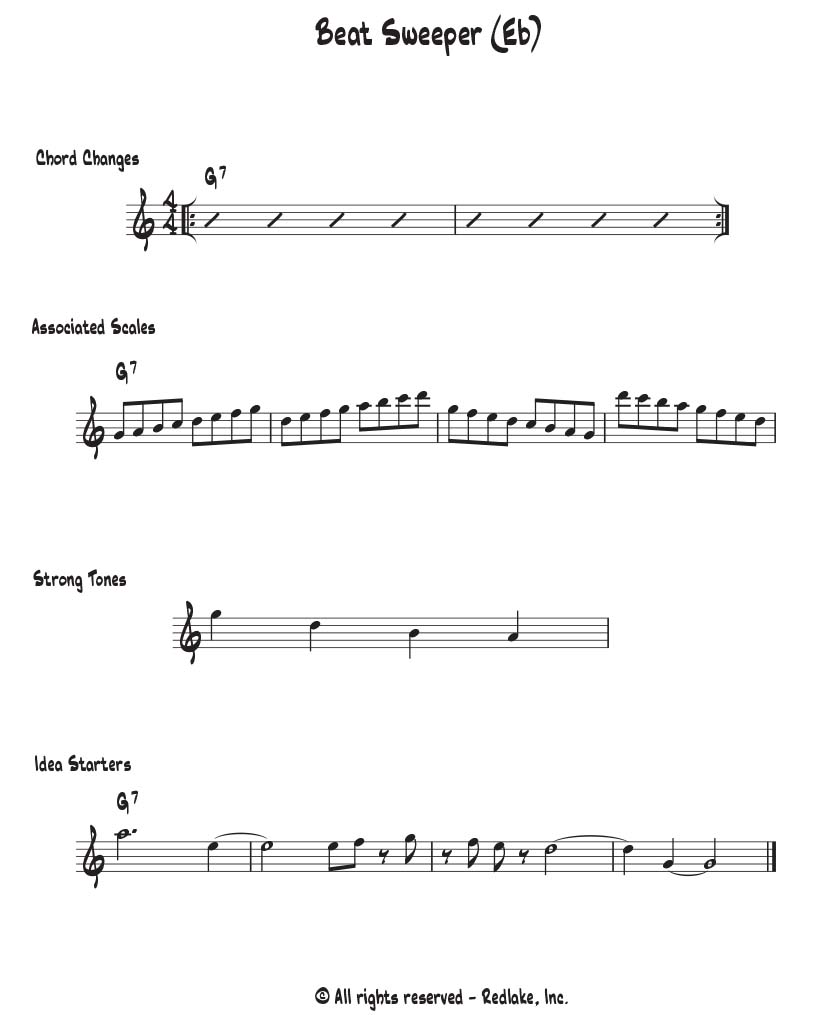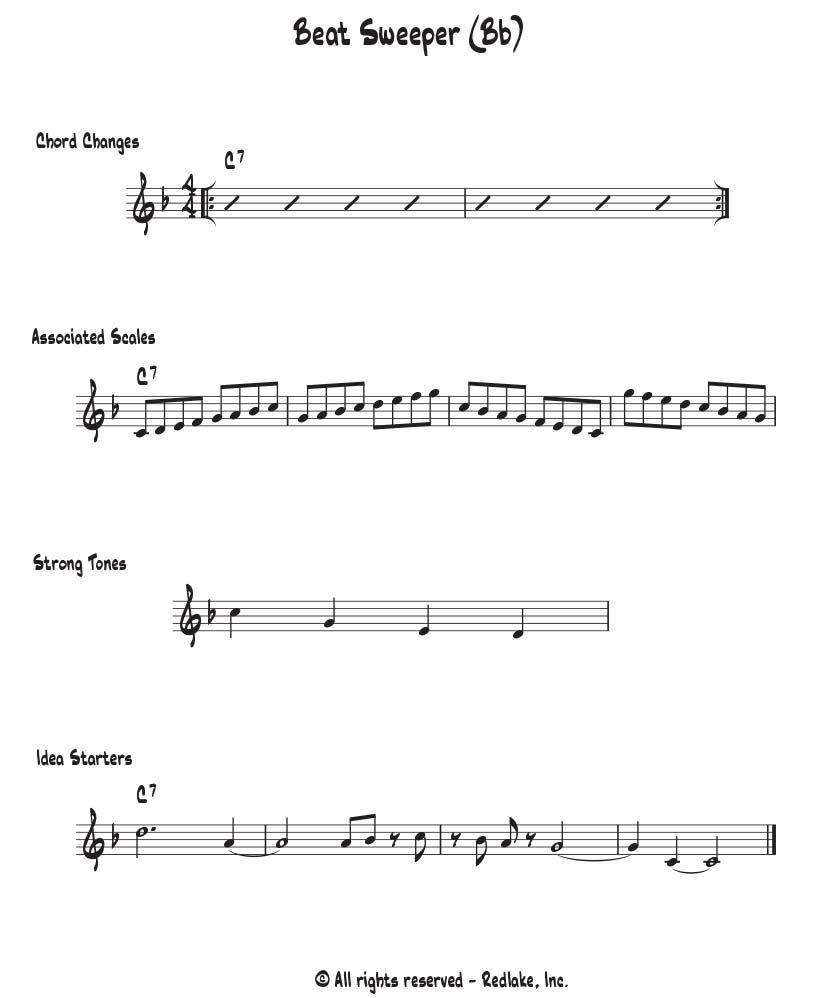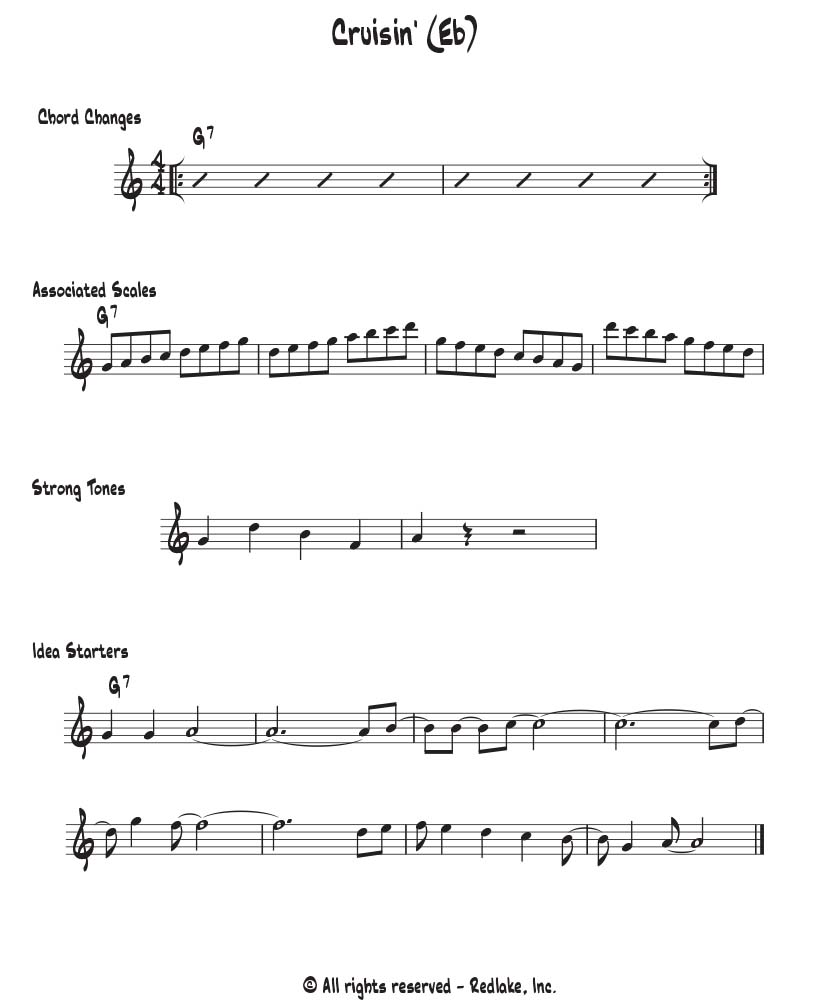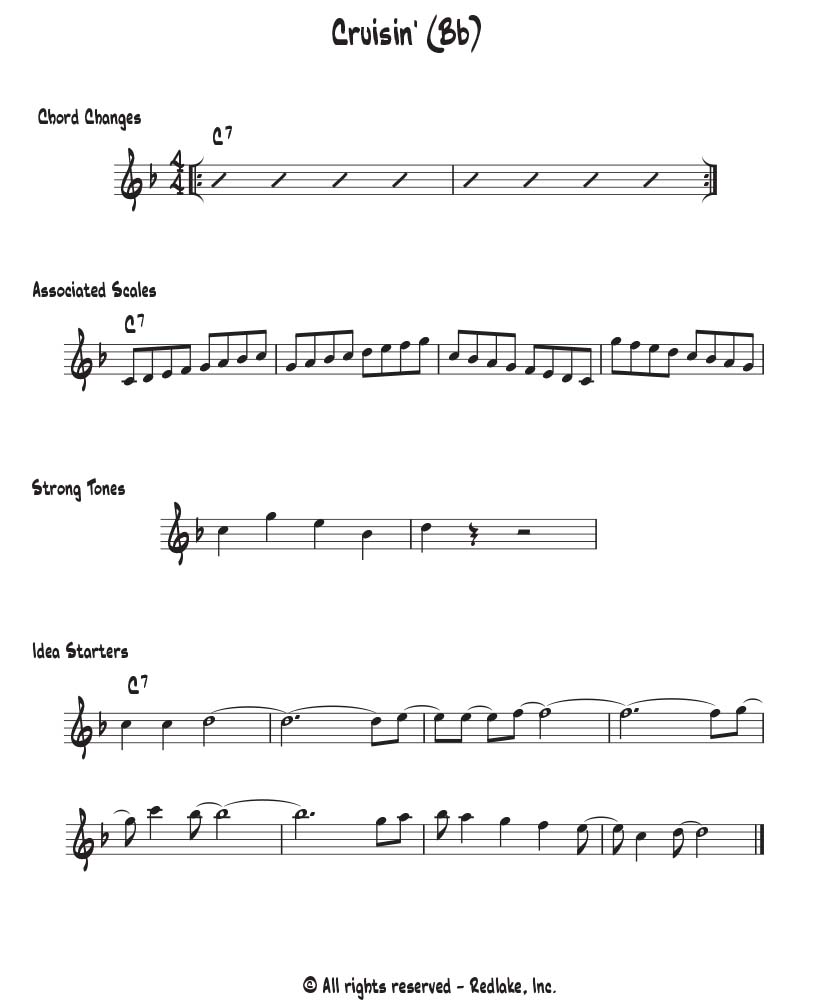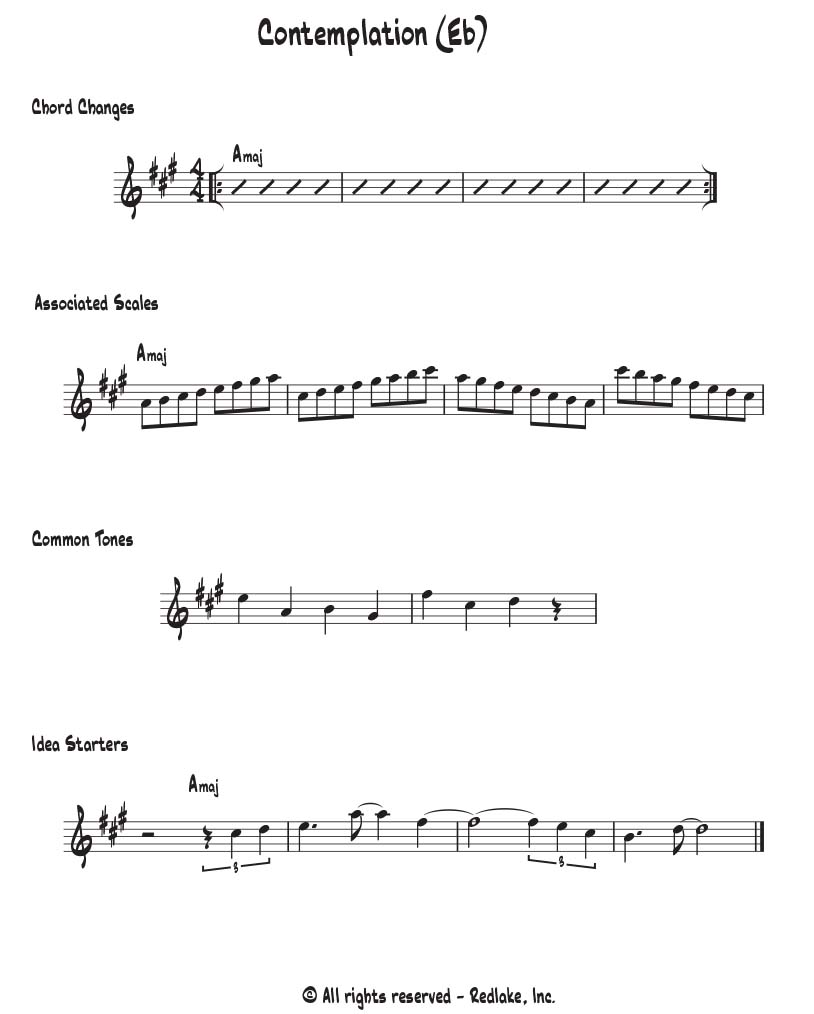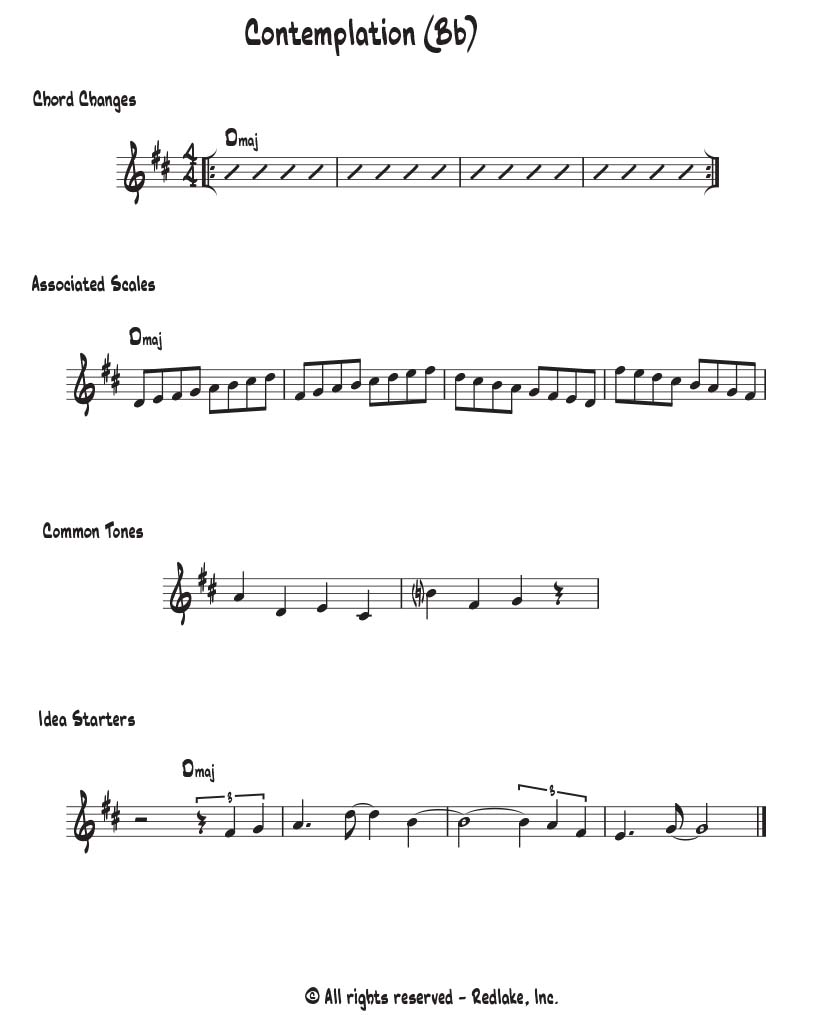Phrase Rhythm pt. 1
There is a rhythm to the lines and phrases of your improvised solo. That rhythm provides interest to your playing. Just like good writing, where the sentence lengths are varied in order to provide interest and avoid monotony. Variety provides interest.
In part 1 of the lesson on phrase rhythm, we look at solos using a type of notation that allows us to see the length and variety of lines. Download the file called Phrase Rhythm Companion Materials to access all the exercises and examples you’ll need for this lesson and the next.
Video transcription
Welcome to phrase rhythm. And this is, again, a little bit of a tricky subject, but it’s a super important one. And I’ve talked about this before. The phrases you play in your improvised solo is a little bit like telling a story, you know, and when you tell a story, you don’t just string together sentences of a similar length like, “I went to the store to buy some bread. I walked through the store to find the bread. I took it to the cash register to pay. I took it out to my car to bring home. I brought it into my house to eat.”
00:39 – 00:51
That’s a totally boring story because there’s no variety of rhythm. Every sentence was basically the same length and structure. It’s kind of similar to, if you were going to play a solo like this,
01:17 – 02:13
You get the idea? Every phrase is the same. It becomes very predictable. So the question is, how do you develop a better, more interesting sense of rhythm to your phrases and to your overall solo? And that’s what I want to talk about in this lesson. So when I talk about phrase rhythm, it’s the the rhythm to the various phrases that compose your improvisation. And I think the storytelling analogy is a good one because if you’re good at telling a story, meaning you’re able to hold people’s interest and you’re able to get some sort of emotional reaction at the end, then you have phrase rhythm, you have good phrase rhythm and perhaps you just haven’t thought of it in the context of your improvising. And yeah, I know, obviously, talking is much easier than playing your instrument. I get it.
02:13 – 03:09
But they do follow similar principles. Now listen to great jazz players and listen to the sequence of their phrases, listen to the length of one to the next and the forward direction that they build to. Now one great example of this, of someone who does this incredibly well is Sonny Rollins. Listen to his solo on St. Thomas from the Saxophone Colossus album. And honestly, I could probably just say just listen to that and get it. And there’s no need for me to say anymore. Goodbye. We’re done. But I won’t do that. But that solo is a master class in this subject. Listen to just his first chorus. Listen to how he builds from one phrase to the next, right. His first phrase is just two notes. His next phrase is just two notes. The next is three notes.
03:09 – 03:37
The fourth is more notes, but they all build on the previous phrases. And then he plays this contrasting long phrase over the bridge and ends the chorus back to the two notes that he started in the beginning. But in a different rhythm, I almost think of it like Beethoven’s Fifth, you know, that two note motif that finds its way through the whole piece. But he’s improvising. Rollins is improvising.
03:38 – 04:03
So we talked about modeling in the last lesson and this is a solo to model. And you know, you’ve got to have the solo memorized that we talked about that in order to mirror Sonny Rollins, so find a rhythm track. In fact, I’m gonna give you one for St. Thomas and play your own version of his solo over that track. So play Sonny Rollins’ solo and then, and mirror that being able to play it by heart and then do your own.
04:04 – 04:33
So start with a two note phrase and then build that organically into kind of a climactic phrase over the bridge and then bring it back down to how you started the solo to develop a sense of how to build using that type of template if you will and do it only in one chorus. So kind of limit yourself to being able to see if you can do that within the space of one chorus.
04:34 – 05:02
Now do it in a different way than Sonny. But see if you can kind of conceptually model his phrase rhythm. In fact, as part of the companion materials to this lesson, I’m gonna give you a few choruses of a rhythm track for St. Thomas. But you probably already have this in, you know, Jamey Aebersold or some other form but use what I’m giving you if you need that. So learn Sonny’s solo and then play your own modeling.
05:03 – 05:39
Now, there’s no one formula for the rhythm that your phrases should follow and that’s obvious, right? This is improvisation. But I think you can develop a stronger sense of phrase rhythm so that your solos don’t sound like what I played earlier over the blues. And of course, you know, I have exercises that I want to introduce in the next video that are gonna really help you get, get that sense of deliberate anticipation for, say for the rhythm. But in this video, I just want to continue to introduce you to the concept of phrase rhythm.
05:40 – 06:30
So let’s go back to my favorite analogy which is driving the car. Sonny Rollins has a clear sense of where he’s driving, of where he’s going. Every note in that first chorus is leading to an emotionally satisfying end. Now he wasn’t thinking, OK, I’ve got 16 bars in which I’m gonna fit these eight phrases. He’s developed a master’s sense of phrase rhythm. For him, he’s not seeing two or three cars down,. He’s in a helicopter looking down on the whole space, right? I mean, in fact, speaking of space, it’s like he’s an astronaut. He’s looking down on planet earth. That’s how much perspective great improvisers have as they tell their story.
Video transcription
06:31 – 07:17
Now, I’ve created a type of rhythmic transcription. We talked about transcription in the last video. This is a type of transcription that provides a visual representation to phrase rhythm. Now, here’s an example of it. Notice that I’ve made a line for each note and the length of the line corresponds to the length of the note approximately. And I’ve separated out each phrase to show the distinction between blue and red just so that you can see at least where my ear tells me one phrase ends and the next one begins. So I don’t want you to focus so much on the notes as they’d be written in classic notation. Instead focus on the length and the contours of the phrases.
07:17 – 07:55
I think reading a notated improvised solo kind of the notes kind of get in the way of what I’m really trying to have you focus on here and I’ve included three of these in the companion materials for this lesson. One is Miles’s first time through the form on So What, another is on Dexter’s Bridge on Darn That Dream from the album Ballads. And I’ve given you Sonny Rollins’ third chorus on that same solo from St. Thomas on Saxophone Colossus. Take a look at the St. Thomas chorus as an example.
07:56 – 08:30
As you look at the transcription, notice a few things: notice the variety of length of the phrases. Some phrases are just a few notes as I talked about in his first chorus where he started with the two note phrase. And some are long notice as you listen. And by the way, really listen to these, as you look at the transcription, as you listen to these, hear how the phrases musically lead to the next and to the next and to the next Sonny Rollins is particularly deliberate in doing that.
08:30 – 09:32
Miles is a master at telling a story with his phrases. And in fact, you could put words to his phrases or his musical sentences. In fact, one of my improvisation teachers in college, we were analyzing Miles’s classic solo on Walkin’ and he put words to it to kind of show us how Miles was telling a story and kind of building that story with his phrase rhythm. And speaking of words, I think a great analogy for this is poetry and great poetry has beautiful phrase rhythm. So consider the classic poem of Walt Whitman’s Shut, Not Your Doors. In fact, even that that title has phrase rhythm to it. Shut Not Your Doors. It’s not, Don’t Shut Your Doors but Shut Not Your Doors. And I thought I would just read the poem.
09:32 – 09:48
Listen to the rhythm of the words and the phrases, listen to the resolution of the phrases. And I’m gonna do my best to read this and try and do justice to it. But as I am, listen to the rhythm of the phrases,
09:50 – 10:28
“Shut not your doors to me. Proud libraries for that which was lacking on all your well filled shelves yet needed most. I bring forth from the war emerging a book. I have made the words of my book. Nothing, the drift of it. Everything, a book separate not linked with the rest nor felt by the intellect. But you ye untold latencies will thrill to every page.” Do you kind of hear how that could be linked to playing an improvised solo?
10:30 – 11:14
If you love poetry, that probably has more of a connection for you, but listen to the solos from the phrase rhythm transactions that I’ve put in the companion materials and by the way, do your own. Find a great solo like we talked about in the last lesson, one that you love and do a little bit of this. You don’t need to be as crazy as one line for each note, but at least give yourself a sense of the variety of length and a little bit of the contour of these to get a little more deeply into the solos. Because I think looking at just lines and dots like this, I think gives you a little bit different perspective on how these masters build their solos, you know, at least for this specific narrow purpose.
11:16 – 11:43
In the next video. I’m going to give you some exercises that are going to strengthen your sense of phrase rhythm and give you some things that you can do to kind of more intuitively develop that sense of one phrase leading to the next and kind of that overview so that you have kind of a complete story by the end, kind of that helicopter view is what, what I’m hoping for you to develop and I’ll provide some specific lengths of time.
11:43 – 12:13
So, I’m a big fan of constraint exercises, right? So constrain the lengths that you have to play little bits of your sentences, a little bits of musical ideas and as an exercise to kind of strengthen your ability to put a musical phrase within this, put a musical phrase within this length and so on and then be able to string them together. So in the next video, I’m going to give you those exercises

